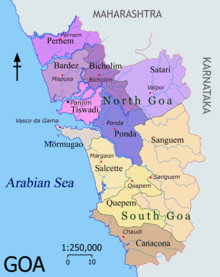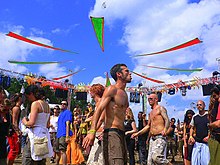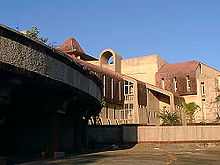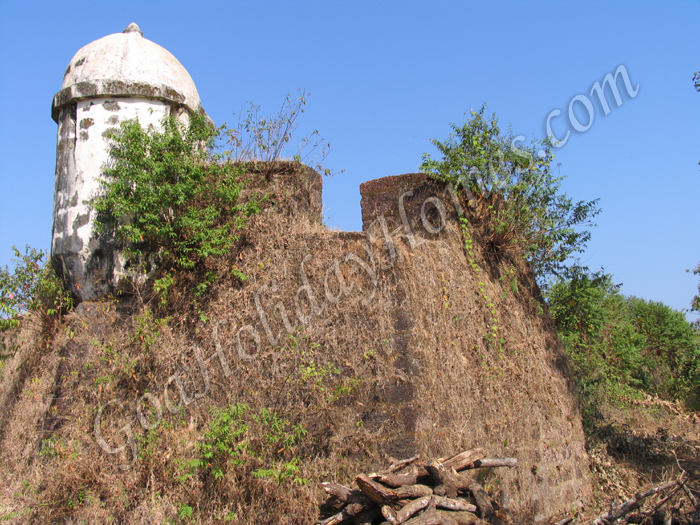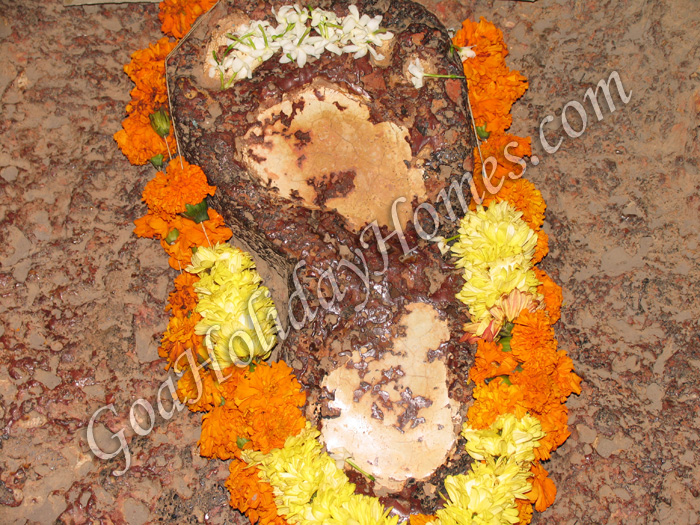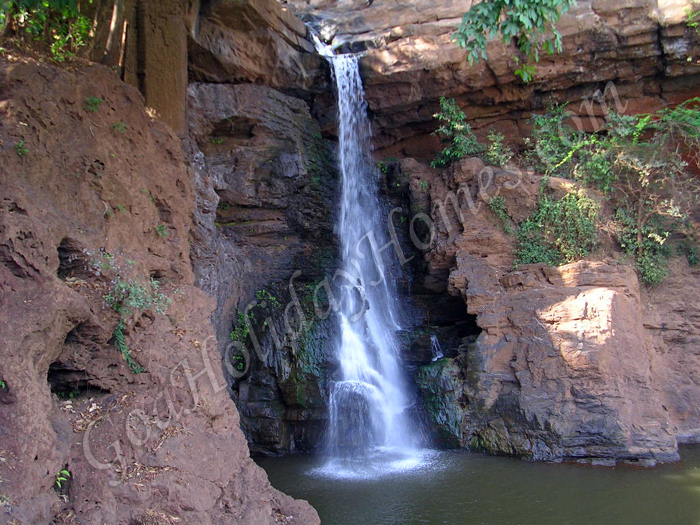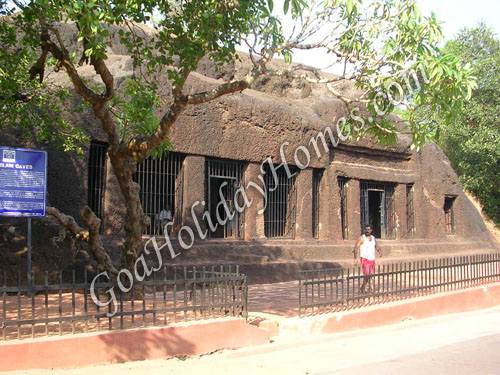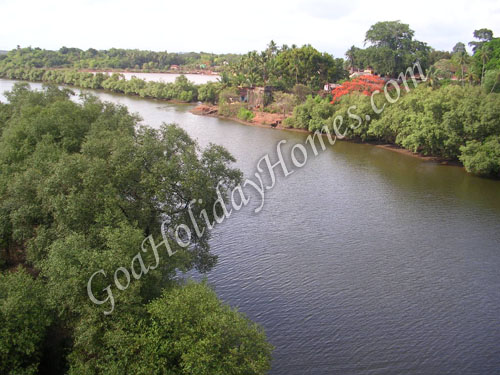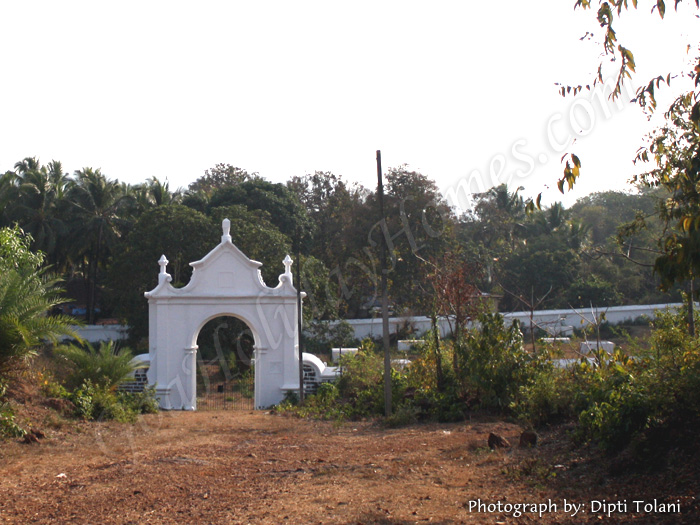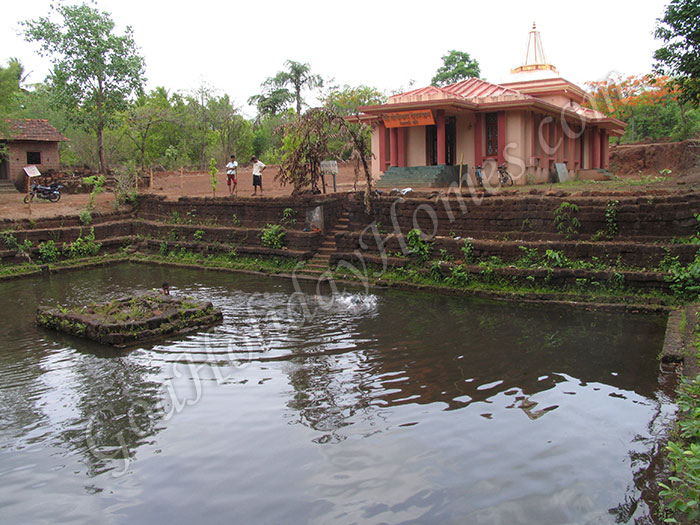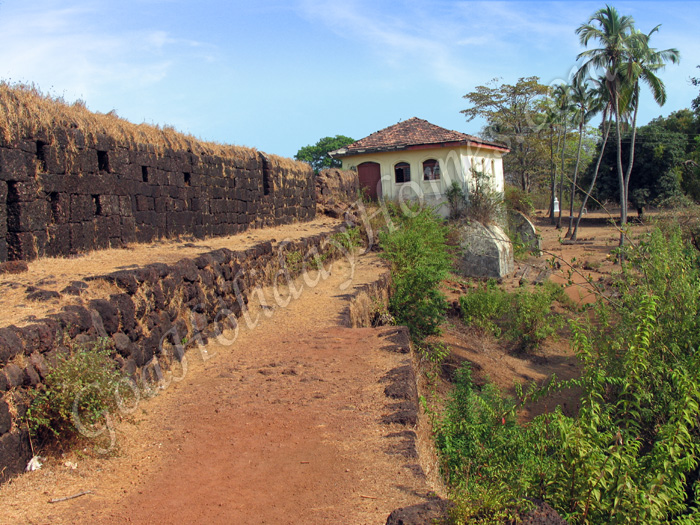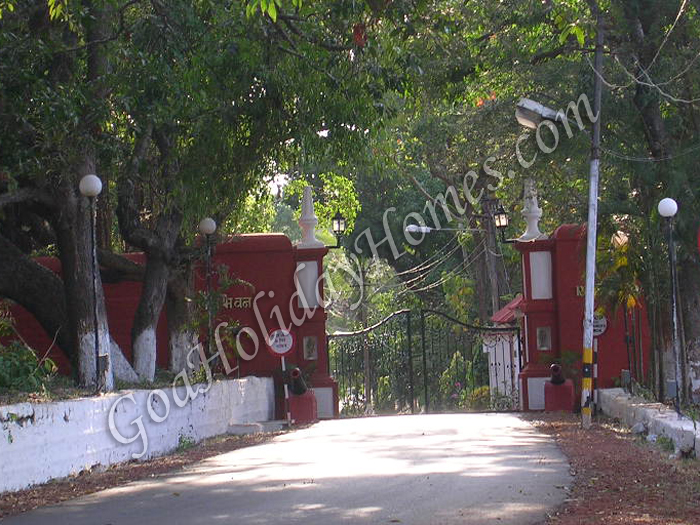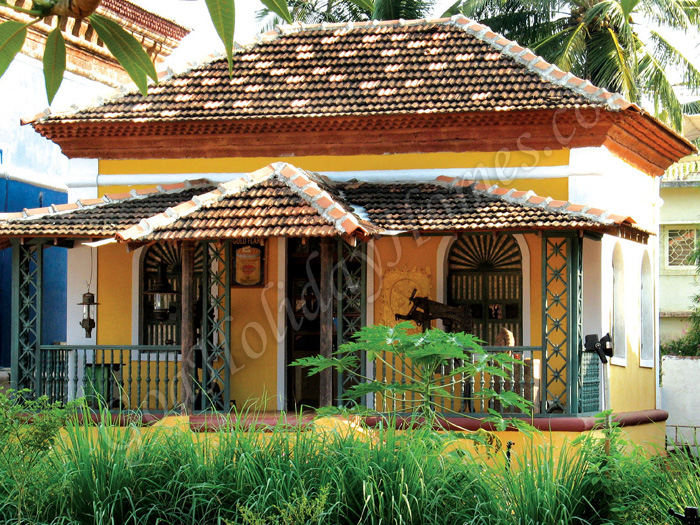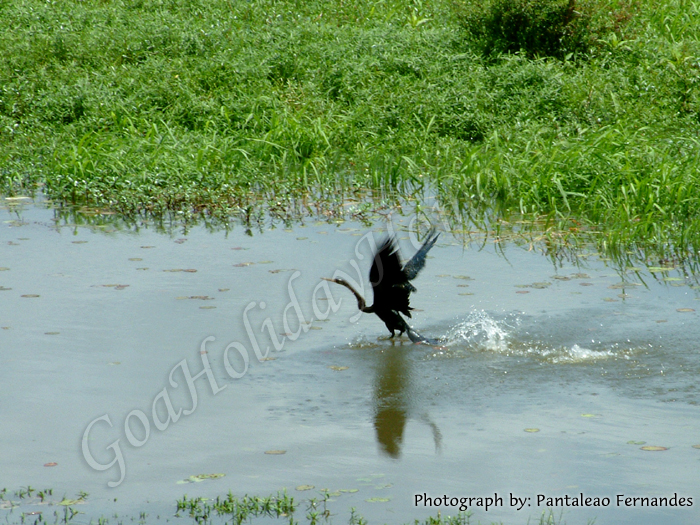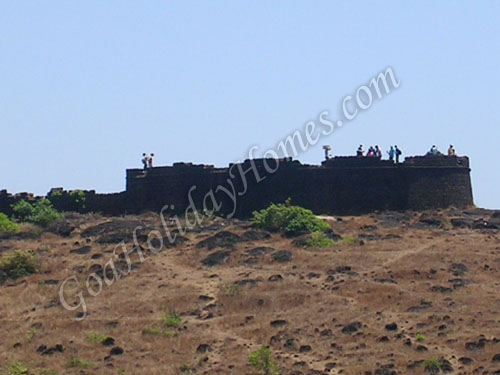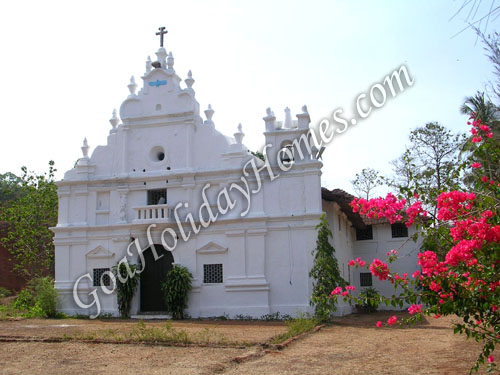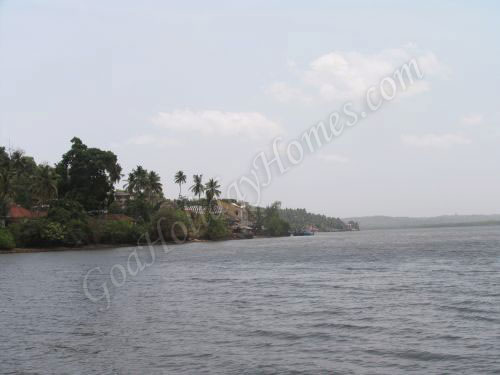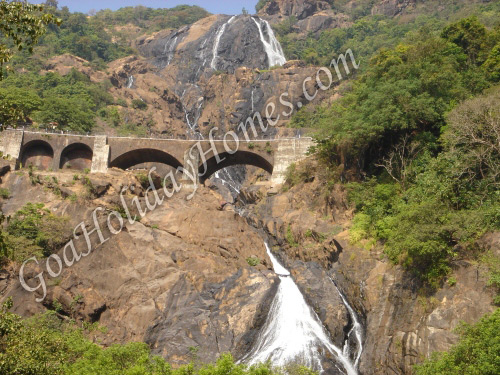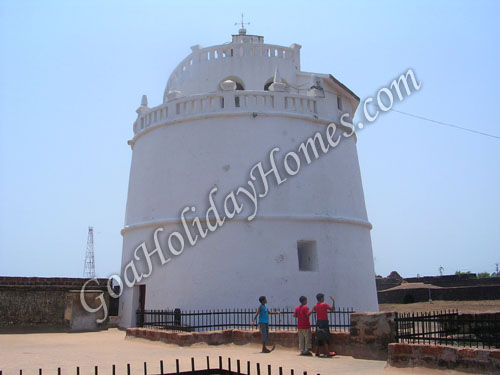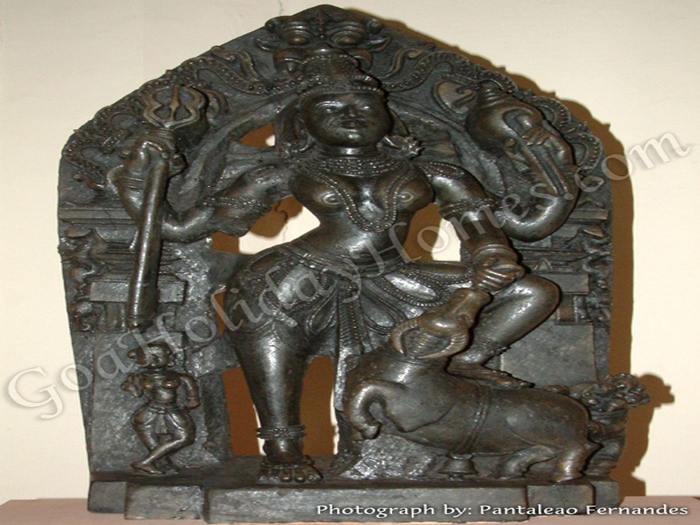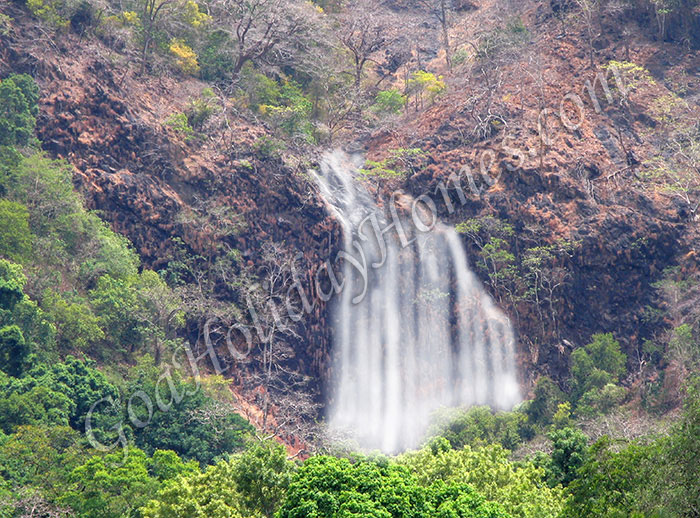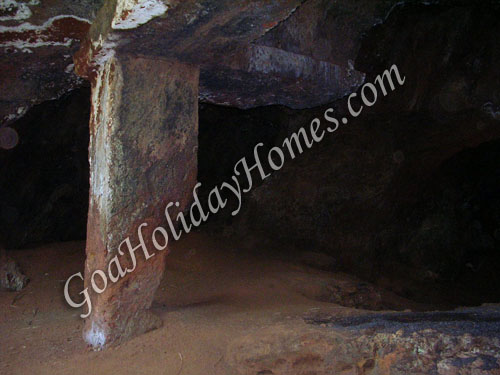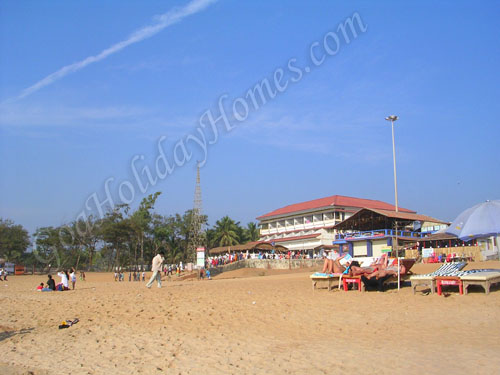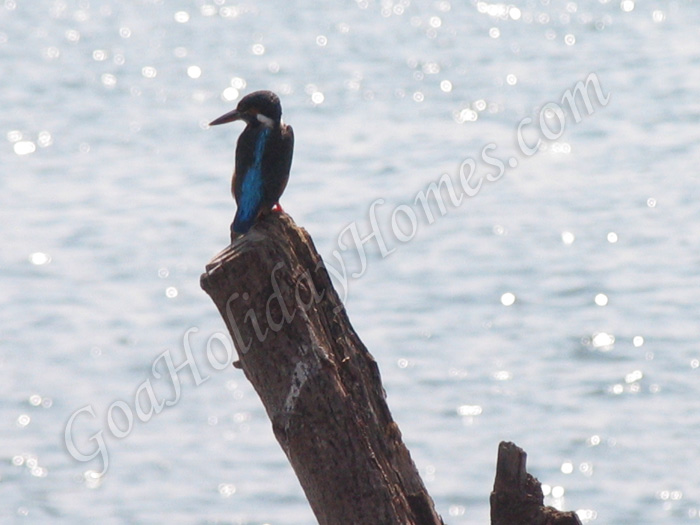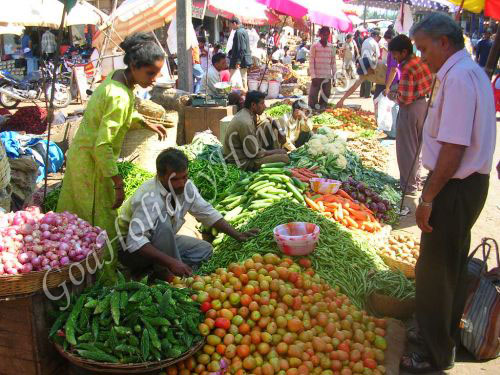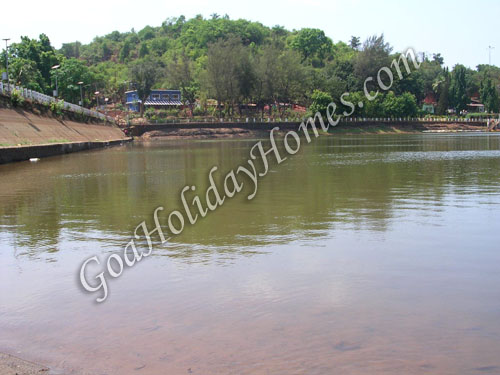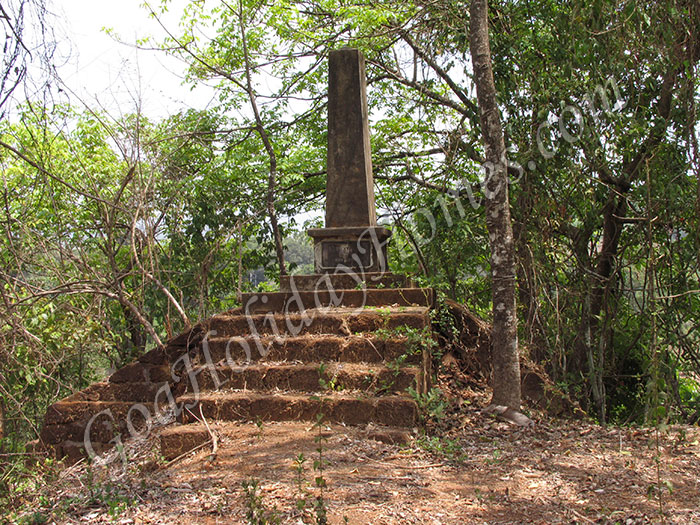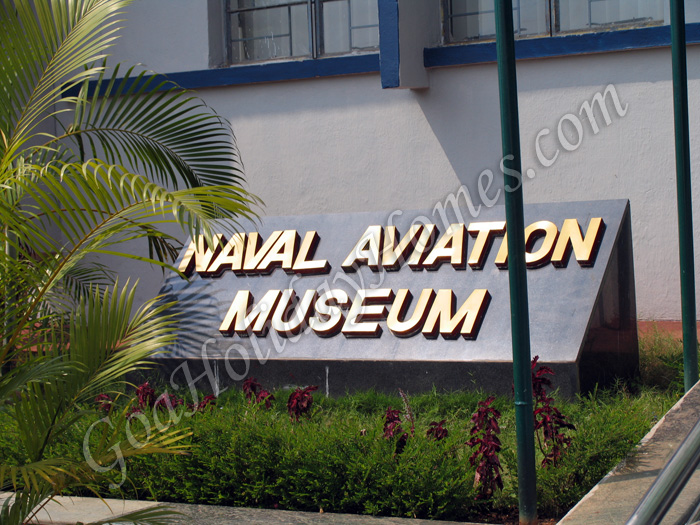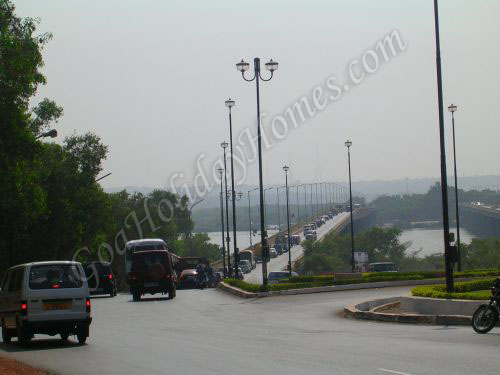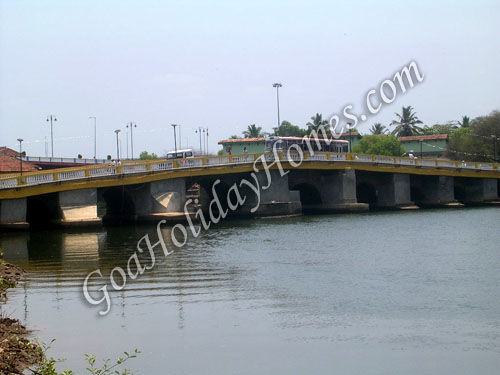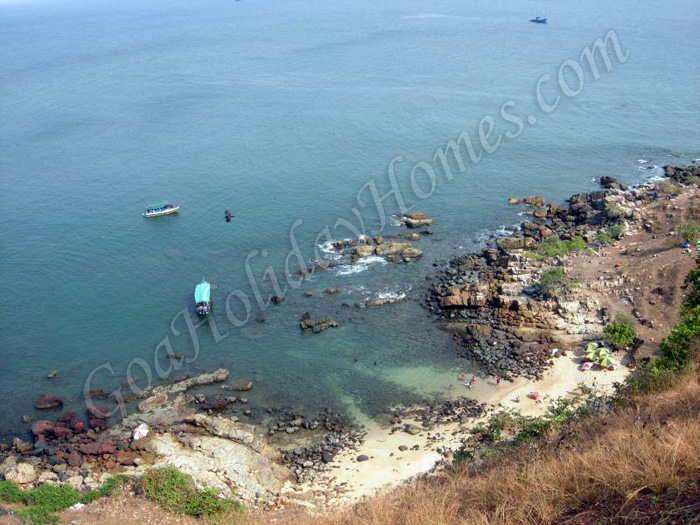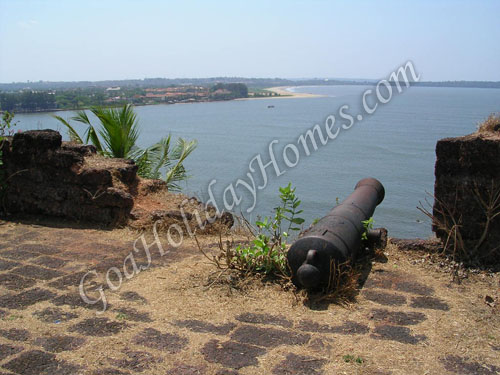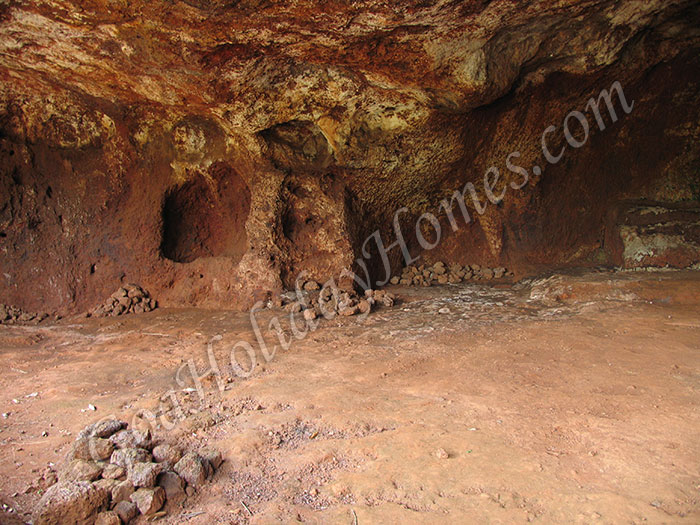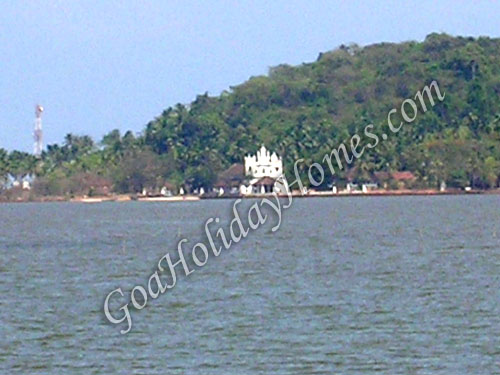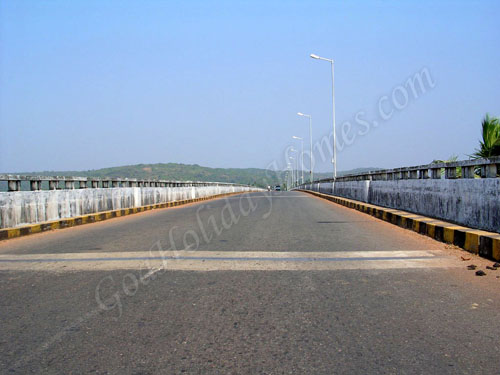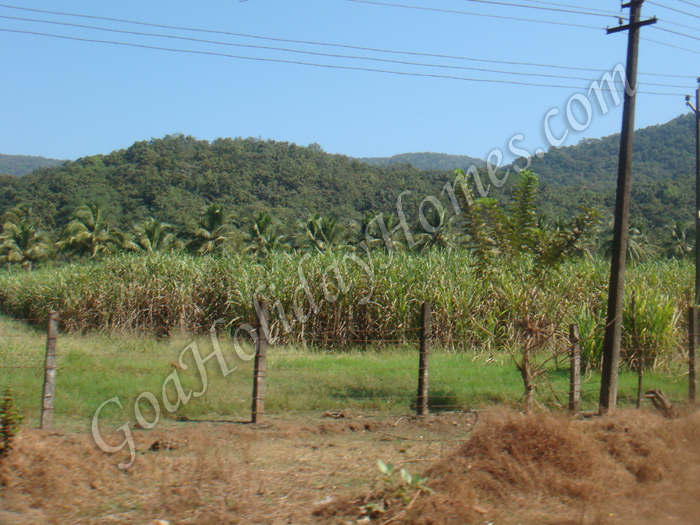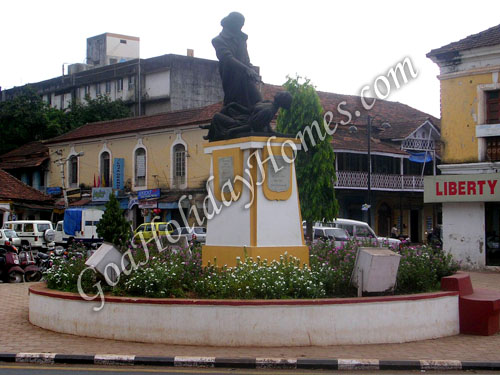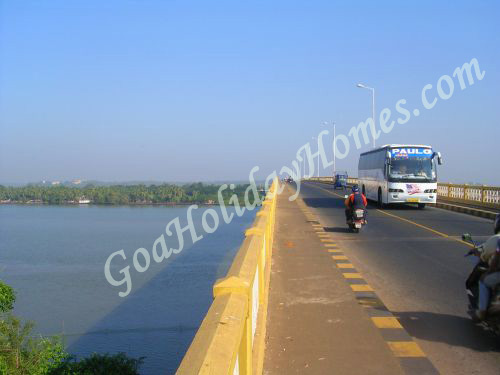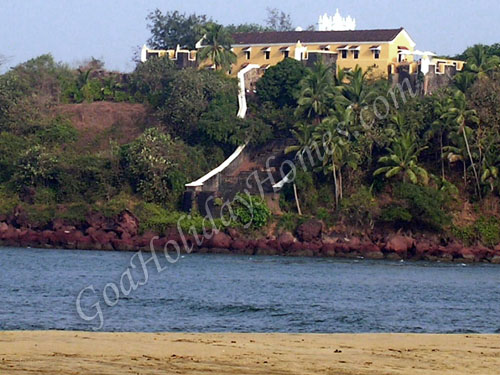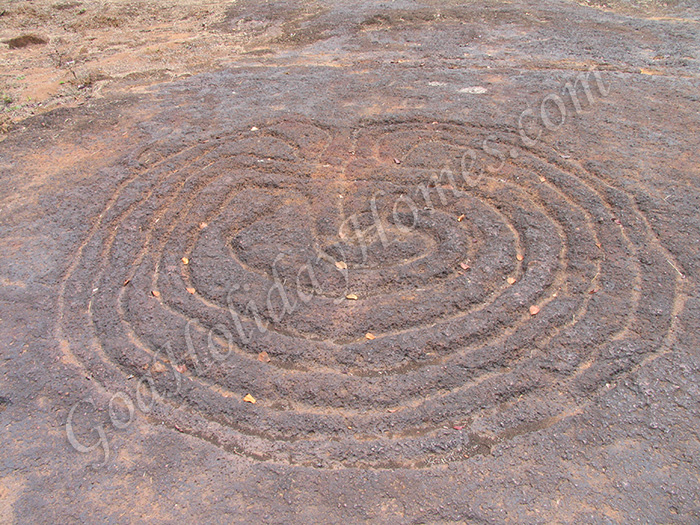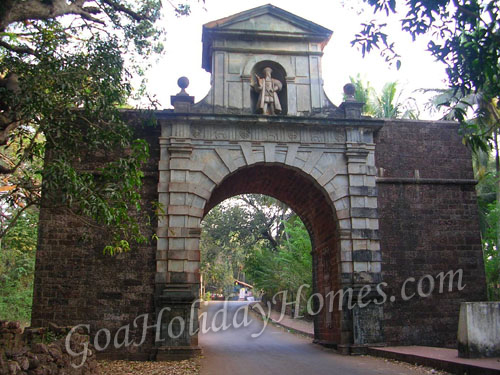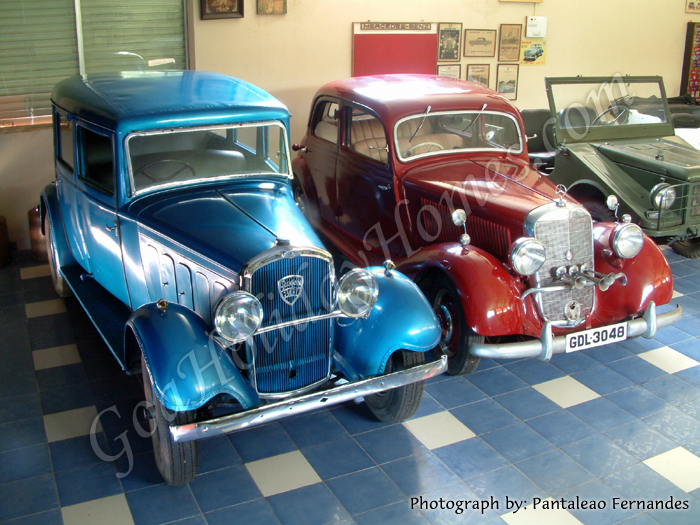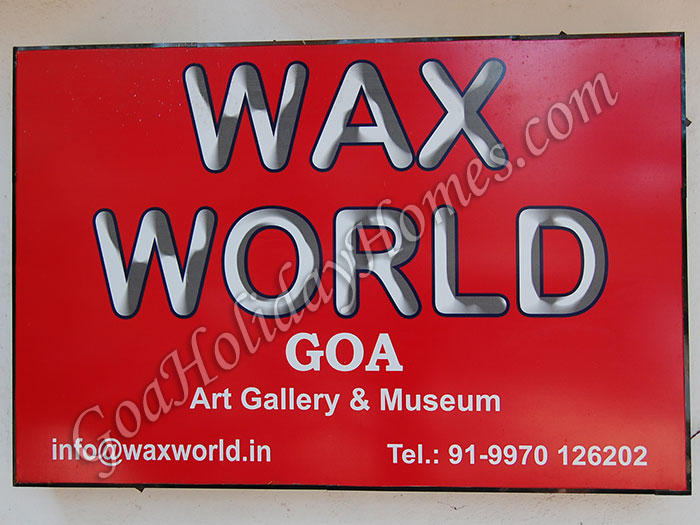Goa (pronounced /ˈɡoʊ.ə/ ( listen); Konkani: गोंय, Marathi: गोवा, Sanskrit: गोमंतक) is India's smallest state by area and the fourth smallest by population. Located in South West India in the region known as the Konkan, it is bounded by the state of Maharashtra to the north, and by Karnataka to the east and south, while the Arabian Sea forms its western coast. Goa is India's richest state with a GDP per capita two and a half times that of the country as a whole.[3] It was ranked the best placed state by the Eleventh Finance Commission for its infrastructure and ranked on top for the best quality of life in India by the National Commission on Population based on the 12 Indicators.[3]
listen); Konkani: गोंय, Marathi: गोवा, Sanskrit: गोमंतक) is India's smallest state by area and the fourth smallest by population. Located in South West India in the region known as the Konkan, it is bounded by the state of Maharashtra to the north, and by Karnataka to the east and south, while the Arabian Sea forms its western coast. Goa is India's richest state with a GDP per capita two and a half times that of the country as a whole.[3] It was ranked the best placed state by the Eleventh Finance Commission for its infrastructure and ranked on top for the best quality of life in India by the National Commission on Population based on the 12 Indicators.[3]
Panaji is the state's capital, while Vasco da Gama is the largest city. The historic city of Margao still exhibits the cultural influence of the Portuguese, who first landed in the early 16th century as merchants, and conquered it soon thereafter. The Portuguese overseas territory of Portuguese India existed for about 450 years, until it was annexed by India in 1961.[4][5]
Renowned for its beaches, places of worship and world heritage architecture, Goa is visited by large numbers of international and domestic tourists each year. It also has rich flora and fauna, owing to its location on the Western Ghats range, which is classified as a biodiversity hotspot.

Goa's known history stretches back to the 3rd century BC, when it formed part of the Mauryan Empire, ruled by the Buddhist emperor, Ashoka of Magadha. Buddhist monks laid the foundation of Buddhism in Goa. Between the 2nd century BCE and the 6th century CE, Goa was ruled by the Chutus of Karwar as feudatories of the Satavahanas of Kolhapur (2nd century BCE to the 2nd century CE), Western Kshatrapas (around 150 CE), the Abhiras of Western Maharashtra, Bhojas of the Yadav clans of Gujarat, and the Konkan Mauryas as feudatories of the Kalachuris.[9] The rule later passed on to the Chalukyas of Badami, who controlled it between 578 to 753, and later the Rashtrakutas of Malkhed from 753 to 963. However from 765 to 1015, the Southern Silharas of Konkan ruled Goa as the feudatories of the Chalukyas and the Rashtrakutas.[10] Over the next few centuries, Goa was successively ruled by the Kadambas as the feudatories of the Chalukyas of Kalyani. They patronised Jainism in Goa.[11]
In 1312, Goa came under the governance of the Delhi Sultanate. However, the kingdom's grip on the region was weak, and by 1370 they were forced to surrender it to Harihara I of the Vijayanagara empire. The Vijayanagara monarchs held on to the territory until 1469, when it was appropriated by the Bahmani sultans of Gulbarga. After that dynasty crumbled, the area fell to the hands of the Adil Shahis of Bijapur who established as their auxiliary capital the city known under the Portuguese as Velha Goa.
In 1510, the Portuguese defeated the ruling Bijapur kings with the help of a local ally, Timayya, leading to the establishment of a permanent settlement in Velha Goa (or Old Goa).
In 1843 the capital was moved to Panjim from Velha Goa. By the mid-18th century the area under occupation had expanded to most of Goa's present day state limits. Simultaneously the Portuguese lost other possessions in India until their borders stabilised and formed the Estado da India Portuguesa, of which Goa was the largest territory.
After India gained independence from the British in 1947, Portugal refused to negotiate with India on the transfer of sovereignty of their Indian enclaves. On 12 December 1961, the Indian Army commenced with Operation Vijay resulting in the annexation of Goa, Damman and Diu into the Indian union. Goa, along with Daman and Diu was made into a centrally administered Union Territory of India. On 30 May 1987, the Union Territory was split, and Goa was made India's twenty-fifth state, with Daman and Diu remaining Union Territories.
Goa's main rivers are the Mandovi, the Zuari, the Terekhol, Chapora River and the Sal. The Mormugao harbour on the mouth of the River Zuari is one of the best natural harbours in South Asia. The Zuari and the Mandovi are the lifelines of Goa, with their tributaries draining 69% of its geographic area. These rivers are one of the busiest rivers in India. Goa has more than forty estuarine, eight marine and about ninety riverine islands. The total navigable length of Goa's rivers is 253 km (157 miles). Goa has more than three hundred ancient tanks built during the rule of the Kadamba dynasty and over a hundred medicinal springs.
Most of Goa's soil cover is made up of laterites which are rich in ferric aluminium oxides and reddish in colour. Further inland and along the riverbanks, the soil is mostly alluvial and loamy. The soil is rich in minerals and humus, thus conducive to plantation. Some of the oldest rocks in the Indian subcontinent are found in Goa between Molem and Anmod on Goa's border with Karnataka. The rocks are classified as Trondjemeitic Gneiss estimated to be 3,600 million years old, dated by the Rubidium isotope dating method. A specimen of the rock is exhibited in the Goa University.
Goa, being in the tropical zone and near the Arabian Sea, has a hot and humid climate for most of the year. The month of May is the hottest, seeing day temperatures of over 35 °C (95 °F) coupled with high humidity. The monsoon rains arrive by early June and provide a much needed respite from the heat. Most of Goa's annual rainfall is received through the monsoons which last till late September.
Goa has a short winter season between mid-December and February. These months are marked by nights of around 21 °C (68 °F) and days of around 28 °C (84 °F) with moderate amounts of humidity. Further inland, due to altitudinal gradation, the nights are a few degrees cooler. During March 2008 Goa was lashed with heavy rain and strong winds. This was the first time in 29 years that Goa had seen rain during March.
The districts are further divided into eleven talukas – Talukas of North Goa are Bardez, Bicholim, Pernem, Ponda, Sattari and Tiswadi, the talukas of South Goa are Canacona, Mormugao, Quepem, Salcete and Sanguem. Headquarters of the respective talukas are Mapusa, Bicholim, Pernem, Ponda, Valpoy, Panjim, Chaudi, Vasco, Quepem, Margao and Sanguem.
Goa's major cities include Mapusa, Margao, Mormugao, Panaji and Vasco . The region connecting the first four cities is considered a de facto conurbation, or a more or less continuous urban area.
Goa's wildlife sanctuaries boast of more than 1512 documented species of plants, over 275 species of birds, over 48 kinds of animals and over 60 genera of reptiles.[12]
Rice is the main food crop with pulses, ragi and other food crops are also grown. Main cash crops are coconuts, cashewnuts, arecanuts, sugarcane and fruits like pineapples, mangos and bananas.[6] The State has a rich forest cover of more than 1,424 km². Goa's state animal is the Gaur, the state bird is the Ruby Throated Yellow Bulbul, which is a variation of Black-crested Bulbul, and the state tree is the Asan.
 The important forests products are bamboo canes, Maratha barks, chillar barks and the bhirand. Coconut trees are ubiquitous and are present in almost all areas of Goa barring the elevated regions. A large number of deciduous vegetation consisting of teak, sal, cashew and mango trees are present. Fruits include jackfruits, mangos, pineapples and blackberries. Goa's forests are rich with medicinal plants.
The important forests products are bamboo canes, Maratha barks, chillar barks and the bhirand. Coconut trees are ubiquitous and are present in almost all areas of Goa barring the elevated regions. A large number of deciduous vegetation consisting of teak, sal, cashew and mango trees are present. Fruits include jackfruits, mangos, pineapples and blackberries. Goa's forests are rich with medicinal plants.
Foxes, wild boars and migrating birds are found in the jungles of Goa. The avifauna includes kingfishers, mynas and parrots. Numerous types of fish are also caught off the coast of Goa and in its rivers. Crabs, lobsters, shrimps, jellyfish, oysters and catfish form some of the piscine catch. Goa also has a high snake population, which keeps the rodent population under control. Goa has many famous National Parks, including the renowned Salim Ali bird sanctuary. Other wildlife sanctuaries include the Bondla Wildlife Sanctuary, Molem Wildlife Sanctuary, Cotigao Wildlife Sanctuary, Madei Wildlife Sanctuary, Netravali Wildlife Sanctuary Mahaveer Wildlife Sanctuary and the Salim Ali Bird Sanctuary located on the island of Chorao.
Goa has more than 33% of its geographic area under government forests (1224.38 km²) of which about 62% has been brought under Protected Areas (PA) of Wildlife Sanctuaries and National Park. Since there is a substantial area under private forests and a large tract under cashew, mango, coconut, etc. plantations, the total forest and tree cover constitutes 56.6% of the geographic area.
Goa's gross state domestic product for 2007 is estimated at $3 billion in current prices. Goa is one of India's richest states with the highest GDP per capita and two and a half times that of the country as a whole, and one of its fastest growth rates: 8.23% (yearly average 1990–2000).[14]

 Tourism is Goa's primary industry: it handles 12%[15] of all foreign tourist arrivals in India. Goa has two main tourist seasons: winter and summer. In the winter time, tourists from abroad (mainly Europe) come to Goa to enjoy the splendid climate. In the summer time (which, in Goa, is the rainy season), tourists from across India come to spend the holidays.
Tourism is Goa's primary industry: it handles 12%[15] of all foreign tourist arrivals in India. Goa has two main tourist seasons: winter and summer. In the winter time, tourists from abroad (mainly Europe) come to Goa to enjoy the splendid climate. In the summer time (which, in Goa, is the rainy season), tourists from across India come to spend the holidays.
The land away from the coast is rich in minerals and ores and mining forms the second largest industry. Mining in Goa focuses on ores of iron, Bauxite, manganese, clays, limestone and silica. The Marmagao Port handled 31.69 million tonnes of cargo last year, and accounts for over 39% of India's Iron Ore exports. The leaders in the Goan Iron Ore industry include Sesa Goa (now owned by Vedanta Resources) and Dempo. Rampant mining in areas rich in Iron Ore and other minerals is now threatening the forest cover as well as posing a health hazard to the local population. Mining corporations are also indulging in illegal mining in some areas without proper permits.
Agriculture, while of shrinking importance to the economy over the past four decades, offers part-time employment to a sizable portion of the populace. Rice is the main agricultural crop, followed by areca, cashew and coconut. The fishing industry provides employment for about forty thousand people, though recent official figures indicate a decline of the importance of this sector and also a fall in catch, perhaps coupled with the fact that traditional fishing has given way to large-scale mechanised trawling.
Medium scale industries include the manufacturing of pesticides, fertilisers, tyres, tubes, footwear, chemicals, pharmaceuticals, wheat products, steel rolling, fruits and fish canning, cashew nuts, textiles, brewery products.
The Goa government has recently decided to not allow any more special economic zones (SEZs) in Goa. This is in stark contrast to policy followed by other states of India. SEZs are known to bring tax revenues for the government and employment option for local citizens since industries flock there for lower tax rates as compared to other areas. Currently there are 16 planned SEZs in Goa. This decision was taken by state government after strong opposition to SEZs by political parties and Goa Catholic Church.[16]
Goa is also notable for its low beer, wine and spirits prices due to its very low excise duty on alcohol. Another source of cash inflow into the state comes from many of its citizens who work abroad and remit money to their families.
Goa's public transport largely consists of privately operated buses linking the major towns to rural areas. Government-run buses, maintained by the Kadamba Transport Corporation, links both major routes (like the Panjim–Margao route) and some remote parts of the state. In large towns such as Panjim and Margao, intra-city buses ply. However, public transport in Goa is less developed, and residents depend heavily on their own transport, usually motorised two-wheelers. Goa has two National Highways passing through it. NH-17 runs along India's west coast and links Goa to Mumbai in the north and Mangalore to the south. NH-4A running across the state connects the capital Panjim to Belgaum in east, linking Goa to cities in the Deccan. The NH-17A connects NH-17 to Mormugao Harbour from Cortalim, and the new NH-17B, is a four lane highway connecting Mormugao Harbour to NH-17 at another location, Verna, via Dabolim airport. Goa has a total of 224 km (139 mi) of National highway, 232 km (144 mi) of state highway and 815 km of district highway.
Hired forms of transport include unmetered taxis, and, in urban areas, auto rickshaws. A unique form of transport in Goa is the Motorcycle taxi, operated by drivers who are locally called "pilots". These vehicles transport a single pillion rider, at fares that are usually negotiated. River crossings in Goa are serviced by flat-bottomed ferry boats, operated by the river navigation departments. Goa has two rail lines—one run by the South Western Railway and the other by the Konkan Railway. The line run by the South Western Railway was built during the colonial era linking the port town of Vasco da Gama, Goa with Hubli, Karnataka via Margao. The Konkan Railway line, which was built during the 1990s, runs parallel to the coast connecting major cities on the western coast.
The Mormugao harbour near the city of Vasco handles mineral ore, petroleum, coal and international containers. Much of the shipments consist of minerals and ores from Goa's hinterland. Panjim, which is situated on the banks of the Mandovi, also has a minor port, which used to handle passenger steamers between Goa and Mumbai till the late 1980s. There was also a short-lived catamaran service linking Mumbai and Panaji operated by Damania Shipping in the 1990s.
A native of Goa is called a Goan in English,Goenkar (गोंयकार) in Konkani, Govekar (गोवेकर ) in Marathi, Goês (male) or Goesa (female) in Portuguese. Goa has a population of 1.344 million residents, making it India's fourth smallest (after Sikkim, Mizoram and Arunachal Pradesh). The population has a growth rate of 14.9% per decade.[19] There are 363 people for each square kilometre of the land.[18] Goa is the State with highest proportion of Urban Population with 49.76% of the population living in urban areas.[20] The literacy rate of Goa is over 82%.[21] The sex ratio is 960 females to 1000 males. The birth rate is 15.70 per 1,000 people in 2007.[22] Goa also is the State with lowest proportion of Scheduled Tribes at 0.04% in India.[23]
According to the 2001 census out of a total population of 1,343,998. 886,551 (65%) were Hindus, 359,568 (26%) were Christians, 92,210 (6%) were Muslims, 970 (0.07%) were Sikhs, 649 (0.04%) were Buddhists, 820 (0.06%) were Jains and 3530 (0.24%) belonged to other religious communities.[24]
Konkani is spoken as a native language by about 61.21% of the people in the state. Other linguistic minorities in the state as of 1991 are Marathi (27.12%), Kannada (3.41%), Urdu (2.81%), and Hindi (2.09%).[28] The Portuguese language, which was used during the colonial era is less popular now.[citation needed]
Goa has two main tourist seasons: winter and summer. In the winter time, tourists from abroad (mainly Europe) come to Goa to enjoy the splendid climate. In the summertime (which, in Goa, is the rainy season), tourists from across India come to spend the holidays.[citation needed]
With the rule of the Portuguese for over 450 years and the consequential influence of Portuguese culture, Goa presents a somewhat different picture to the foreign visitor than other parts of the country. The state of Goa is famous for its excellent beaches, churches, and temples. The Bom Jesus Cathedral, Fort Aguada and a new wax museum on Indian history, culture and heritage in Old Goa are other tourism destinations.
In many parts of Goa, mansions constructed in the Indo-Portuguese style architecture still stand, though in some villages, most of them are in a dilapidated condition. Fontainhas in Panaji has been declared a cultural quarter, showcasing the life, architecture and culture of Goa. Some influences from the Portuguese era are visible in some of Goa's temples, notably the Mangueshi Temple and the Mahalasa Temple, although after 1961, many of these were demolished and reconstructed in the indigenous Indian style.
There is a Wax Museum located in Old Goa next to the Churches that is worth seeing—probably the only one of its kind in India.
 The architecture of Goa is a combination of Indian, Mughal and Portuguese styles. Since the Portuguese ruled for four centuries, many churches and houses bear a striking element of the Portuguese style of architecture. Goa was also under the Mughal rule and thus one finds monuments built in the typical Mughal style complete with the domes.
The architecture of Goa is a combination of Indian, Mughal and Portuguese styles. Since the Portuguese ruled for four centuries, many churches and houses bear a striking element of the Portuguese style of architecture. Goa was also under the Mughal rule and thus one finds monuments built in the typical Mughal style complete with the domes.
A number of Goans have represented India in football, and four of them, namely Brahmanand Sankhwalkar, Bruno Coutinho, Mauricio Afonso, and Roberto Fernandes have all captained the national team at one time or another.
In recent decades, a growing influence of cricket is visible.[citation needed] Goa now has its own cricket team. Dilip Sardesai remains the only Goan to date to play international cricket for India.[39]
Goa's capital is Panaji, known as Panjim in English and earlier called Pangim in Portuguese times, and known in the local language as Ponnje is the administrative capital of Goa lying on the left bank of the Mandovi near Panaji. Goa's legislative assembly building is located in Porvorim – the seat of the Goa assembly, which lies across the Mandovi River. The state's judicial hierarchy relates to Mumbai (formerly known as Bombay, which is the capital of Goa's neighbouring Maharashtra state), as the state comes under the Bombay High Court. A bench of the High Court is present in Panaji. Unlike other states, which follow the British Indian model of civil laws framed for individual religions, the Portuguese Uniform Civil Code, based on the Napoleonic code, has been retained by the Goa government.
Goa has a unicameral legislature consisting of a forty member Legislative Assembly, headed by a Chief Minister who wields the executive power. The present Chief Minister of Goa is Mr. Digambar Kamat and the Leader of Opposition is Mr. Manohar Parrikar. The ruling government consists of the party or coalition garnering the most seats in the state elections and enjoying the support of a simple majority of the House. The governor is appointed by the President of India. The governor's role is largely ceremonial, but plays a crucial role when it comes to deciding who should form the next government or in suspending the legislature as has happened in the recent past. After having stable governance for nearly thirty years up to 1990, Goa is now notorious for its political instability having seen fourteen governments in the span of the fifteen years between 1990 and 2005.[40] In March 2005 the assembly was dissolved by the governor and President's Rule was declared, which suspended the legislature. A by-election in June 2005 saw the Congress coming back to power after winning three of the five seats that went to polls. The Congress party and the Bharatiya Janata Party (BJP) are the two largest parties in the state. In the assembly pole of 2007, Congress-led coalition won and started ruling the state.[41] Other parties include the United Goans Democratic Party, the Nationalist Congress Party and the Maharashtrawadi Gomantak Party.[42]
DTH (Direct To Home) TV services are available from Dish TV, Tata Sky & DD Direct Plus. The All India Radio is the only radio channel in the state, broadcasting in both FM and AM bands. Two AM channels are broadcast, the primary channel at 1287 kHz and the Vividh Bharati channel at 1539 kHz. AIR's FM channel is called FM Rainbow and is broadcast at 105.4 MHz. Private FM radio channels available are Big FM at 92.7 MHz, Radio Mirchi at 98.3 MHz, and Radio Indigo at 91.9 MHz. There is also an educational radio channel, Gyan Vani, run by IGNOU broadcast from Panaji at 107.8 MHz. In 2006, St Xavier's College, Mapusa, became the first college in the state to launch a campus community radio station 'Voice of Xavier's'.
Major cellular service operators include Reliance Infocomm, Tata Indicom, Vodafone (previously Hutch), Bharti Airtel, BSNL and Idea cellular.
Local newspaper publications include the English language The Herald (Goa's oldest, once a Portuguese language paper known as O Heraldo), the Gomantak Times and the Navhind Times. In addition to these, The Times of India and the Indian Express are also received from Mumbai and Bangalore in the urban areas. The Times of India has recently started publication from Goa itself serving the local population news directly from the state capital. Among the list of officially-accredited newspapers are Sunaparant in Konkani (Devanagari script), The Navhind Times, The Herald Times and The Gomantak Times in English; and Gomantak, Tarun Bharat, Navprabha, Goa Times, Sanatan Prabhat, Govadoot (all in Marathi). All are dailies. Other publications in the state include Goa Today (English-language, monthly), Goan Observer (English, weekly), Vavraddeancho Ixtt (Roman-script Konkani, weekly) Goa Messenger, Gulab (Konkani, monthly), Bimb (Devanagari-script Konkani) .
After ten years of schooling, students join a Higher Secondary school, which offers courses in popular streams such as Science, Arts, Law and Commerce.A student may also opt for a course in vocational studies. Additionally, many join three year diploma courses. Two years of college is followed by a professional degree. Goa University is the sole university in the state located in Taleigao and all Goan colleges are affiliated to it. There are four engineering colleges and one medical college in the state. The Goa Engineering College and Goa Medical College are run by the state whereas the other three engineering colleges are run by private organisations.
Among the best known schools in Goa include Vidya Prabhodini at Porvorim, K.B. Hedgewar High School, the Progress high school, Don Bosco High School, People's high school, Mushtifund high school in panaji, A. J. De Almeida high school in ponda, Vidya Bharati Mahila Nutan, Manovikas in Margao etc.
Among the best known colleges in Goa include G.V.M's S.N.J.A higher secondary school, Don Bosco College, D.M's college of Arts Science and Commerce, St Xavier's College, Carmel College, Chowgule College, Dhempe College, Damodar College, MES College, etc.
The private engineering colleges are Shree Rayeshwar Institute of Engineering and Information Technology, Shiroda, and Padre Conceicao College of Engineering, Verna. There are also colleges offering pharmacy, architecture and dentistry along with numerous private colleges offering law, arts, commerce and science. There is also two National Oceanographic Science related centres, NCAOR and the National Institute of Oceanography (NIO) in Vasco and Panjim. In 2004, BITS Pilani university started its Second Campus, BITS Pilani Goa Campus near Dabolim.
In addition to the engineering colleges, there are quite a few polytechnic institutions such as the Father Agnel Polytechnic, Verna and the Institute of Shipbuilding Technology, Vasco da gama which impart technical and vocational training.
Many residents, however, choose to take up courses in other states as the demand for a course in Goa is more than that available. Goa is also well-known in India for courses in marine engineering, fisheries, hotel management and cuisine. The State also hosts one of the best business school in the country – the Goa Institute of Management which is autonomous and was founded in 1993 by Romuald D'Souza. Portuguese is taught as a part of the school curriculum, often as a third language in some schools. The Goa University also offers Bachelors and Masters degrees in Portuguese.
Places To Visit In Goa
Panaji is the state's capital, while Vasco da Gama is the largest city. The historic city of Margao still exhibits the cultural influence of the Portuguese, who first landed in the early 16th century as merchants, and conquered it soon thereafter. The Portuguese overseas territory of Portuguese India existed for about 450 years, until it was annexed by India in 1961.[4][5]
Renowned for its beaches, places of worship and world heritage architecture, Goa is visited by large numbers of international and domestic tourists each year. It also has rich flora and fauna, owing to its location on the Western Ghats range, which is classified as a biodiversity hotspot.
[edit] Etymology
The name Goa came to European languages from the Portuguese, but its precise origin is unclear. In ancient literature, Goa was known by many names such as Gomanta, Gomanchala, Gopakapattam, Gopakapuri, Govapuri, Govem, and Gomantak.[6] The Indian epic Mahabharata refers to the area now known as Goa, as Goparashtra or Govarashtra which means a nation of cowherds. Gopakapuri or Gopakapattanam were used in some ancient Sanskrit texts, and these names were also mentioned in other sacred Hindu texts such as the Harivansa and the Skanda Purana. In the latter, Goa is also known as Gomanchala. Parashurambhoomi is a name that the region is referred to in certain inscriptions and texts such as the Puranas.[7] In the third century BCE, Goa was known as Aparantha, and is mentioned by the Greek geographer Ptolemy. The Greeks referred to Goa as Nelkinda in the 13th century. Some other historical names for Goa are Sindapur, Sandabur, and Mahassapatam.[8][edit] History
Main article: History of Goa

The Sé Cathedral at Old Goa, an example of Portuguese influence
Goa's known history stretches back to the 3rd century BC, when it formed part of the Mauryan Empire, ruled by the Buddhist emperor, Ashoka of Magadha. Buddhist monks laid the foundation of Buddhism in Goa. Between the 2nd century BCE and the 6th century CE, Goa was ruled by the Chutus of Karwar as feudatories of the Satavahanas of Kolhapur (2nd century BCE to the 2nd century CE), Western Kshatrapas (around 150 CE), the Abhiras of Western Maharashtra, Bhojas of the Yadav clans of Gujarat, and the Konkan Mauryas as feudatories of the Kalachuris.[9] The rule later passed on to the Chalukyas of Badami, who controlled it between 578 to 753, and later the Rashtrakutas of Malkhed from 753 to 963. However from 765 to 1015, the Southern Silharas of Konkan ruled Goa as the feudatories of the Chalukyas and the Rashtrakutas.[10] Over the next few centuries, Goa was successively ruled by the Kadambas as the feudatories of the Chalukyas of Kalyani. They patronised Jainism in Goa.[11]
In 1312, Goa came under the governance of the Delhi Sultanate. However, the kingdom's grip on the region was weak, and by 1370 they were forced to surrender it to Harihara I of the Vijayanagara empire. The Vijayanagara monarchs held on to the territory until 1469, when it was appropriated by the Bahmani sultans of Gulbarga. After that dynasty crumbled, the area fell to the hands of the Adil Shahis of Bijapur who established as their auxiliary capital the city known under the Portuguese as Velha Goa.
In 1510, the Portuguese defeated the ruling Bijapur kings with the help of a local ally, Timayya, leading to the establishment of a permanent settlement in Velha Goa (or Old Goa).
In 1843 the capital was moved to Panjim from Velha Goa. By the mid-18th century the area under occupation had expanded to most of Goa's present day state limits. Simultaneously the Portuguese lost other possessions in India until their borders stabilised and formed the Estado da India Portuguesa, of which Goa was the largest territory.
After India gained independence from the British in 1947, Portugal refused to negotiate with India on the transfer of sovereignty of their Indian enclaves. On 12 December 1961, the Indian Army commenced with Operation Vijay resulting in the annexation of Goa, Damman and Diu into the Indian union. Goa, along with Daman and Diu was made into a centrally administered Union Territory of India. On 30 May 1987, the Union Territory was split, and Goa was made India's twenty-fifth state, with Daman and Diu remaining Union Territories.
[edit] Geography and climate
Goa encompasses an area of 3,702 km² (1,430 sq mile). It lies between the latitudes 14°53′54″ N and 15°40′00″ N and longitudes 73°40′33″ E and 74°20′13″ E. Most of Goa is a part of the coastal country known as the Konkan, which is an escarpment rising up to the Western Ghats range of mountains, which separate it from the Deccan Plateau. The highest point is the Sonsogor, with an altitude of 1,167 meters (3,827 feet). Goa has a coastline of 101 km (63 miles).Goa's main rivers are the Mandovi, the Zuari, the Terekhol, Chapora River and the Sal. The Mormugao harbour on the mouth of the River Zuari is one of the best natural harbours in South Asia. The Zuari and the Mandovi are the lifelines of Goa, with their tributaries draining 69% of its geographic area. These rivers are one of the busiest rivers in India. Goa has more than forty estuarine, eight marine and about ninety riverine islands. The total navigable length of Goa's rivers is 253 km (157 miles). Goa has more than three hundred ancient tanks built during the rule of the Kadamba dynasty and over a hundred medicinal springs.
Most of Goa's soil cover is made up of laterites which are rich in ferric aluminium oxides and reddish in colour. Further inland and along the riverbanks, the soil is mostly alluvial and loamy. The soil is rich in minerals and humus, thus conducive to plantation. Some of the oldest rocks in the Indian subcontinent are found in Goa between Molem and Anmod on Goa's border with Karnataka. The rocks are classified as Trondjemeitic Gneiss estimated to be 3,600 million years old, dated by the Rubidium isotope dating method. A specimen of the rock is exhibited in the Goa University.
Goa, being in the tropical zone and near the Arabian Sea, has a hot and humid climate for most of the year. The month of May is the hottest, seeing day temperatures of over 35 °C (95 °F) coupled with high humidity. The monsoon rains arrive by early June and provide a much needed respite from the heat. Most of Goa's annual rainfall is received through the monsoons which last till late September.
Goa has a short winter season between mid-December and February. These months are marked by nights of around 21 °C (68 °F) and days of around 28 °C (84 °F) with moderate amounts of humidity. Further inland, due to altitudinal gradation, the nights are a few degrees cooler. During March 2008 Goa was lashed with heavy rain and strong winds. This was the first time in 29 years that Goa had seen rain during March.
[edit] Subdivisions
The state is divided into two districts: North Goa and South Goa. Panaji is the headquarters of the North Goa district and Margao of the south district. Each district is governed by a district collector, an administrator appointed by the Indian government.The districts are further divided into eleven talukas – Talukas of North Goa are Bardez, Bicholim, Pernem, Ponda, Sattari and Tiswadi, the talukas of South Goa are Canacona, Mormugao, Quepem, Salcete and Sanguem. Headquarters of the respective talukas are Mapusa, Bicholim, Pernem, Ponda, Valpoy, Panjim, Chaudi, Vasco, Quepem, Margao and Sanguem.
Goa's major cities include Mapusa, Margao, Mormugao, Panaji and Vasco . The region connecting the first four cities is considered a de facto conurbation, or a more or less continuous urban area.
[edit] Flora and fauna
Main article: Flora and fauna of Goa
Equatorial forest cover in Goa stands at 1,424 km2 (549.81 sq mi),[6] most of which is owned by the government. Government owned forest is estimated at 1,224.38 km2 (472.74 sq mi) whilst private is given as 200 km2 (77.22 sq mi). Most of the forests in the state are located in the interior eastern regions of the state. The Western Ghats, which form most of eastern Goa, have been internationally recognised as one of the biodiversity hotspots of the world. In the February 1999 issue of National Geographic Magazine, Goa was compared with the Amazon and Congo basins for its rich tropical biodiversity[citation needed].Goa's wildlife sanctuaries boast of more than 1512 documented species of plants, over 275 species of birds, over 48 kinds of animals and over 60 genera of reptiles.[12]
Rice is the main food crop with pulses, ragi and other food crops are also grown. Main cash crops are coconuts, cashewnuts, arecanuts, sugarcane and fruits like pineapples, mangos and bananas.[6] The State has a rich forest cover of more than 1,424 km². Goa's state animal is the Gaur, the state bird is the Ruby Throated Yellow Bulbul, which is a variation of Black-crested Bulbul, and the state tree is the Asan.

Rice paddies are common in rural Goa.
Foxes, wild boars and migrating birds are found in the jungles of Goa. The avifauna includes kingfishers, mynas and parrots. Numerous types of fish are also caught off the coast of Goa and in its rivers. Crabs, lobsters, shrimps, jellyfish, oysters and catfish form some of the piscine catch. Goa also has a high snake population, which keeps the rodent population under control. Goa has many famous National Parks, including the renowned Salim Ali bird sanctuary. Other wildlife sanctuaries include the Bondla Wildlife Sanctuary, Molem Wildlife Sanctuary, Cotigao Wildlife Sanctuary, Madei Wildlife Sanctuary, Netravali Wildlife Sanctuary Mahaveer Wildlife Sanctuary and the Salim Ali Bird Sanctuary located on the island of Chorao.
Goa has more than 33% of its geographic area under government forests (1224.38 km²) of which about 62% has been brought under Protected Areas (PA) of Wildlife Sanctuaries and National Park. Since there is a substantial area under private forests and a large tract under cashew, mango, coconut, etc. plantations, the total forest and tree cover constitutes 56.6% of the geographic area.
[edit] Economy
| Gross State Domestic Product (in millions of Rupees)[13] | |
| Year | GSDP |
|---|---|
| 1980 | 3,980 |
| 1985 | 6,550 |
| 1990 | 12,570 |
| 1995 | 33,190 |
| 2000 | 76,980 |

Taj Hotels Fort Aguada Beach Resort

Commercial area in Panjim.
The land away from the coast is rich in minerals and ores and mining forms the second largest industry. Mining in Goa focuses on ores of iron, Bauxite, manganese, clays, limestone and silica. The Marmagao Port handled 31.69 million tonnes of cargo last year, and accounts for over 39% of India's Iron Ore exports. The leaders in the Goan Iron Ore industry include Sesa Goa (now owned by Vedanta Resources) and Dempo. Rampant mining in areas rich in Iron Ore and other minerals is now threatening the forest cover as well as posing a health hazard to the local population. Mining corporations are also indulging in illegal mining in some areas without proper permits.
Agriculture, while of shrinking importance to the economy over the past four decades, offers part-time employment to a sizable portion of the populace. Rice is the main agricultural crop, followed by areca, cashew and coconut. The fishing industry provides employment for about forty thousand people, though recent official figures indicate a decline of the importance of this sector and also a fall in catch, perhaps coupled with the fact that traditional fishing has given way to large-scale mechanised trawling.
Medium scale industries include the manufacturing of pesticides, fertilisers, tyres, tubes, footwear, chemicals, pharmaceuticals, wheat products, steel rolling, fruits and fish canning, cashew nuts, textiles, brewery products.
The Goa government has recently decided to not allow any more special economic zones (SEZs) in Goa. This is in stark contrast to policy followed by other states of India. SEZs are known to bring tax revenues for the government and employment option for local citizens since industries flock there for lower tax rates as compared to other areas. Currently there are 16 planned SEZs in Goa. This decision was taken by state government after strong opposition to SEZs by political parties and Goa Catholic Church.[16]
Goa is also notable for its low beer, wine and spirits prices due to its very low excise duty on alcohol. Another source of cash inflow into the state comes from many of its citizens who work abroad and remit money to their families.
[edit] Transport
Goa's sole airport, the Dabolim Airport, is both a military and civilian airport catering to domestic and international airlines that stop en route to other Indian destinations. The airport also handles a large number of chartered flights. Goa receives international flights from Qatar, Dubai, Sharjah and Kuwait in the Middle East and from Britain, Germany and Russia during the charter flight tourist season. Dabolim Airport is serviced by the following carriers – Air India, Indian Airlines, Kingfisher Airlines, Go Air, SpiceJet, Jet Airways, Qatar Airlines,besides Charter flights from the UK, Russia, Germany operated by Thomas Cook, Condor, Monarch Airlines etc.Goa's public transport largely consists of privately operated buses linking the major towns to rural areas. Government-run buses, maintained by the Kadamba Transport Corporation, links both major routes (like the Panjim–Margao route) and some remote parts of the state. In large towns such as Panjim and Margao, intra-city buses ply. However, public transport in Goa is less developed, and residents depend heavily on their own transport, usually motorised two-wheelers. Goa has two National Highways passing through it. NH-17 runs along India's west coast and links Goa to Mumbai in the north and Mangalore to the south. NH-4A running across the state connects the capital Panjim to Belgaum in east, linking Goa to cities in the Deccan. The NH-17A connects NH-17 to Mormugao Harbour from Cortalim, and the new NH-17B, is a four lane highway connecting Mormugao Harbour to NH-17 at another location, Verna, via Dabolim airport. Goa has a total of 224 km (139 mi) of National highway, 232 km (144 mi) of state highway and 815 km of district highway.
Hired forms of transport include unmetered taxis, and, in urban areas, auto rickshaws. A unique form of transport in Goa is the Motorcycle taxi, operated by drivers who are locally called "pilots". These vehicles transport a single pillion rider, at fares that are usually negotiated. River crossings in Goa are serviced by flat-bottomed ferry boats, operated by the river navigation departments. Goa has two rail lines—one run by the South Western Railway and the other by the Konkan Railway. The line run by the South Western Railway was built during the colonial era linking the port town of Vasco da Gama, Goa with Hubli, Karnataka via Margao. The Konkan Railway line, which was built during the 1990s, runs parallel to the coast connecting major cities on the western coast.
The Mormugao harbour near the city of Vasco handles mineral ore, petroleum, coal and international containers. Much of the shipments consist of minerals and ores from Goa's hinterland. Panjim, which is situated on the banks of the Mandovi, also has a minor port, which used to handle passenger steamers between Goa and Mumbai till the late 1980s. There was also a short-lived catamaran service linking Mumbai and Panaji operated by Damania Shipping in the 1990s.
[edit] Demographics
See also: Goans
| [show]Population Growth | |||
|---|---|---|---|
| Census | Pop. | %± | |
| 1951 | 547,000 | | |
| 1961 | 590,000 | 7.9% | |
| 1971 | 795,000 | 34.7% | |
| 1981 | 1,008,000 | 26.8% | |
| 1991 | 1,170,000 | 16.1% | |
| 2001 | 1,343,998 | 14.9% | |
| Source:Census of India[17][18] | |||
| Religion in Goa[24] | ||||
|---|---|---|---|---|
| Religion | Percent | |||
| Hinduism | | 65% | ||
| Christianity | | 26% | ||
| Islam | | 6% | ||
| Others† | | 3% | ||
| Distribution of religions †Includes Sikhs (0.07%), Buddhists (0.04%), Jains (0.06%) and Others (0.24%). | ||||
[edit] Languages
The Goa, Daman and Diu Official Language Act, 1987 makes Konkani in the Devanagari script the sole official language of Goa, but provides that Marathi may also be used "for all or any of the official purposes". The Government also has a policy of replying in Marathi to correspondence received in Marathi.[25] Whilst there have been demands for according Marathi and Konkani in Roman script co-equal status in the state, As of October 2008[update], Konkani remained the sole official language.[26][27]Konkani is spoken as a native language by about 61.21% of the people in the state. Other linguistic minorities in the state as of 1991 are Marathi (27.12%), Kannada (3.41%), Urdu (2.81%), and Hindi (2.09%).[28] The Portuguese language, which was used during the colonial era is less popular now.[citation needed]
[edit] Tourism
See also: Tourism in Goa
Tourism is generally focused on the coastal areas of Goa, with decreased tourist activity inland. In 2004, there were more than two million tourists reported to have visited Goa, about 360,000 of whom were from abroad.[29]Goa has two main tourist seasons: winter and summer. In the winter time, tourists from abroad (mainly Europe) come to Goa to enjoy the splendid climate. In the summertime (which, in Goa, is the rainy season), tourists from across India come to spend the holidays.[citation needed]
With the rule of the Portuguese for over 450 years and the consequential influence of Portuguese culture, Goa presents a somewhat different picture to the foreign visitor than other parts of the country. The state of Goa is famous for its excellent beaches, churches, and temples. The Bom Jesus Cathedral, Fort Aguada and a new wax museum on Indian history, culture and heritage in Old Goa are other tourism destinations.
[edit] Historic sites and neighbourhoods
Goa has two World Heritage Sites: the Bom Jesus Basilica [30] and a few designated convents. The Basilica holds the mortal remains of St. Francis Xavier, regarded by many Catholics as the patron saint of Goa (the patron of the Archdiocese of Goa is actually the Blessed Joseph Vaz). Once every twelve years, the body is taken down for veneration and for public viewing. The last such event was conducted in 2004. The Velhas Conquistas regions are also known for its Goa-Portuguese style architecture. There are many forts in Goa such as Tiracol, Chapora, Corjuem, Aguada, Gaspar Dias and Cabo de Rama.In many parts of Goa, mansions constructed in the Indo-Portuguese style architecture still stand, though in some villages, most of them are in a dilapidated condition. Fontainhas in Panaji has been declared a cultural quarter, showcasing the life, architecture and culture of Goa. Some influences from the Portuguese era are visible in some of Goa's temples, notably the Mangueshi Temple and the Mahalasa Temple, although after 1961, many of these were demolished and reconstructed in the indigenous Indian style.
[edit] Museums and Science Centre
Goa also has a few museums, the two important ones being Goa State Museum and the Naval Aviation Museum. The Aviation museum is the only one of its kind in the whole of India.[citation needed] Also, a place not well known to tourists is the Goa Science Center, which is located in Panjim.[31] The National Institute of Oceanography (NIO) is also located in Goa at Dona Paula.[32]There is a Wax Museum located in Old Goa next to the Churches that is worth seeing—probably the only one of its kind in India.
[edit] People and culture
Main article: Culture of Goa
The tableau of Goa showcases religious harmony by focusing on the Deepastambha, the Cross, Ghode Modni followed by a chariot. Western royal attire of kings and regional dances being performed depict the unique blend of different religions and cultures of the State. The festival of music and dance, Shigmo Mel or the Holi and Spring celebrations,signify unity in diversity.[33] Prominent local festivals are Chavoth, Diwali, Christmas, Easter, Shigmo, Samvatsar Padvo, Dasara etc.The Goan Carnival and new year celebration is known to attract a large number of tourists.[edit] Dance and music
Goan Hindus are very fond of Natak, Bhajan and Kirtan. Many famous Indian Classical singers hail from Goa, including Lata Mangeshkar, Asha Bhosle, Kishori Amonkar, Kesarbai Kerkar, Jitendra Abhisheki and Pandit Prabhakar Karekar. Some traditional Goan art forms are dekhnni, fugdi, corridinho, Mando and dulpod.[edit] Theatre
Natak, Tiatr and Zagor are the chief forms of Goa's traditional performance arts. Other forms are Ranmale, Dashavatari, Kalo, Goulankala, Lalit, Kala and Rathkala. Stories from the Ramayana and the Mahabharata along with more modern social subjects are narrated with song and dance.[34][35] The drummers, keyboard artists, and guitarists are part of the show and give the background score.[edit] Food
Rice with fish curry (Xit kodi in Konkani) is the staple diet in Goa. Goan cuisine is famous for its rich variety of fish dishes cooked with elaborate recipes. Coconut and coconut oil are widely used in Goan cooking along with chili peppers, spices and vinegar giving the food a unique flavour. Pork dishes such as Vindaloo, Xacuti and Sorpotel are cooked for major occasions among the Goan Catholics. An exotic Goan vegetable stew, known as Khatkhate, is a very popular dish during the celebrations of festivals, Hindu and Christian alike. Khatkhate contains at least five vegetables, fresh coconut, and special Goan spices that add to the aroma. Sannas, Hitt are variants of idli and Polle,Amboli,Kailoleo are variants of dosa;are native to Goa. A rich egg-based multi-layered sweet dish known as bebinca is a favourite at Christmas. The most popular alcoholic beverage in Goa is feni; Cashew feni is made from the fermentation of the fruit of the cashew tree, while coconut feni is made from the sap of toddy palms.[citation needed][edit] Architecture
| | This section's tone or style may not be appropriate for Wikipedia. Specific concerns may be found on the talk page. See Wikipedia's guide to writing better articles for suggestions. (July 2009) |

Fontainhas is a protected area in Panjim for its old architecture. People living in the houses can only renovate the insides – the outside look has to be left as it is.
[edit] Sports
Football is the most popular sport in Goa and is embedded in Goan culture.[36] Its origins in the state are traced back to 1883 when the visiting Irish priest Fr. William Robert Lyons established the sport as part of a "Christian education".[36][37] On 22 December 1959, the Associação de Futebol de Goa was formed, which continues to administer the game in the state under the new name, Goa Football Association.[36] Goa, along with West Bengal and Kerala.[36] is the locus of football in the country and is home to many football clubs in India's I-League. The state's football powerhouses include Salgaocar, Dempo, Churchill Brothers, Vasco Sports Club and Sporting Clube de Goa. The state's main football stadium, Fatorda (or Nehru stadium), is located at Margao and also hosts cricket matches.[38]A number of Goans have represented India in football, and four of them, namely Brahmanand Sankhwalkar, Bruno Coutinho, Mauricio Afonso, and Roberto Fernandes have all captained the national team at one time or another.
In recent decades, a growing influence of cricket is visible.[citation needed] Goa now has its own cricket team. Dilip Sardesai remains the only Goan to date to play international cricket for India.[39]
For more details on this topic, see Goans in sports.
[edit] Government and politics
In the Parliament of India, Goa has two seats in the Lok Sabha, one representing each district, and one seat in the Rajya Sabha.Goa's capital is Panaji, known as Panjim in English and earlier called Pangim in Portuguese times, and known in the local language as Ponnje is the administrative capital of Goa lying on the left bank of the Mandovi near Panaji. Goa's legislative assembly building is located in Porvorim – the seat of the Goa assembly, which lies across the Mandovi River. The state's judicial hierarchy relates to Mumbai (formerly known as Bombay, which is the capital of Goa's neighbouring Maharashtra state), as the state comes under the Bombay High Court. A bench of the High Court is present in Panaji. Unlike other states, which follow the British Indian model of civil laws framed for individual religions, the Portuguese Uniform Civil Code, based on the Napoleonic code, has been retained by the Goa government.
Goa has a unicameral legislature consisting of a forty member Legislative Assembly, headed by a Chief Minister who wields the executive power. The present Chief Minister of Goa is Mr. Digambar Kamat and the Leader of Opposition is Mr. Manohar Parrikar. The ruling government consists of the party or coalition garnering the most seats in the state elections and enjoying the support of a simple majority of the House. The governor is appointed by the President of India. The governor's role is largely ceremonial, but plays a crucial role when it comes to deciding who should form the next government or in suspending the legislature as has happened in the recent past. After having stable governance for nearly thirty years up to 1990, Goa is now notorious for its political instability having seen fourteen governments in the span of the fifteen years between 1990 and 2005.[40] In March 2005 the assembly was dissolved by the governor and President's Rule was declared, which suspended the legislature. A by-election in June 2005 saw the Congress coming back to power after winning three of the five seats that went to polls. The Congress party and the Bharatiya Janata Party (BJP) are the two largest parties in the state. In the assembly pole of 2007, Congress-led coalition won and started ruling the state.[41] Other parties include the United Goans Democratic Party, the Nationalist Congress Party and the Maharashtrawadi Gomantak Party.[42]
[edit] Media and communication
Main article: Media in Goa
Goa is served by almost all television channels available in India. Channels are received through cable in most parts of Goa. In the interior regions, channels are received via satellite dishes. Doordarshan, the national television broadcaster, has two free terrestrial channels on air.DTH (Direct To Home) TV services are available from Dish TV, Tata Sky & DD Direct Plus. The All India Radio is the only radio channel in the state, broadcasting in both FM and AM bands. Two AM channels are broadcast, the primary channel at 1287 kHz and the Vividh Bharati channel at 1539 kHz. AIR's FM channel is called FM Rainbow and is broadcast at 105.4 MHz. Private FM radio channels available are Big FM at 92.7 MHz, Radio Mirchi at 98.3 MHz, and Radio Indigo at 91.9 MHz. There is also an educational radio channel, Gyan Vani, run by IGNOU broadcast from Panaji at 107.8 MHz. In 2006, St Xavier's College, Mapusa, became the first college in the state to launch a campus community radio station 'Voice of Xavier's'.
Major cellular service operators include Reliance Infocomm, Tata Indicom, Vodafone (previously Hutch), Bharti Airtel, BSNL and Idea cellular.
Local newspaper publications include the English language The Herald (Goa's oldest, once a Portuguese language paper known as O Heraldo), the Gomantak Times and the Navhind Times. In addition to these, The Times of India and the Indian Express are also received from Mumbai and Bangalore in the urban areas. The Times of India has recently started publication from Goa itself serving the local population news directly from the state capital. Among the list of officially-accredited newspapers are Sunaparant in Konkani (Devanagari script), The Navhind Times, The Herald Times and The Gomantak Times in English; and Gomantak, Tarun Bharat, Navprabha, Goa Times, Sanatan Prabhat, Govadoot (all in Marathi). All are dailies. Other publications in the state include Goa Today (English-language, monthly), Goan Observer (English, weekly), Vavraddeancho Ixtt (Roman-script Konkani, weekly) Goa Messenger, Gulab (Konkani, monthly), Bimb (Devanagari-script Konkani) .
[edit] Education
According to the 2001 census, Goa has a literacy rate of 82% with 89% of males and 76% of females being literate.[43] Each taluka is made up of villages, each having a school run by the government. Due to the low levels of corruption and the quality of the government schools, private schools are less in demand, compared to the rest of the country. All schools come under the state SSC whose syllabus is prescribed by the state Education department. There are also a few schools run by the all-India ICSE board or NIOS board. Most students in Goa complete their high school using English as the medium of instruction. Primary schools, on the other hand are largely run in Konkani and marathi (in private, but government-aided schools). As is the case in most of India, enrollment for vernacular media has seen a fall in numbers in favour of English medium education. As per a report published in the times of India, 84% of Goan schools run without an administrative head.[44]After ten years of schooling, students join a Higher Secondary school, which offers courses in popular streams such as Science, Arts, Law and Commerce.A student may also opt for a course in vocational studies. Additionally, many join three year diploma courses. Two years of college is followed by a professional degree. Goa University is the sole university in the state located in Taleigao and all Goan colleges are affiliated to it. There are four engineering colleges and one medical college in the state. The Goa Engineering College and Goa Medical College are run by the state whereas the other three engineering colleges are run by private organisations.
Among the best known schools in Goa include Vidya Prabhodini at Porvorim, K.B. Hedgewar High School, the Progress high school, Don Bosco High School, People's high school, Mushtifund high school in panaji, A. J. De Almeida high school in ponda, Vidya Bharati Mahila Nutan, Manovikas in Margao etc.
Among the best known colleges in Goa include G.V.M's S.N.J.A higher secondary school, Don Bosco College, D.M's college of Arts Science and Commerce, St Xavier's College, Carmel College, Chowgule College, Dhempe College, Damodar College, MES College, etc.
The private engineering colleges are Shree Rayeshwar Institute of Engineering and Information Technology, Shiroda, and Padre Conceicao College of Engineering, Verna. There are also colleges offering pharmacy, architecture and dentistry along with numerous private colleges offering law, arts, commerce and science. There is also two National Oceanographic Science related centres, NCAOR and the National Institute of Oceanography (NIO) in Vasco and Panjim. In 2004, BITS Pilani university started its Second Campus, BITS Pilani Goa Campus near Dabolim.
In addition to the engineering colleges, there are quite a few polytechnic institutions such as the Father Agnel Polytechnic, Verna and the Institute of Shipbuilding Technology, Vasco da gama which impart technical and vocational training.
Many residents, however, choose to take up courses in other states as the demand for a course in Goa is more than that available. Goa is also well-known in India for courses in marine engineering, fisheries, hotel management and cuisine. The State also hosts one of the best business school in the country – the Goa Institute of Management which is autonomous and was founded in 1993 by Romuald D'Souza. Portuguese is taught as a part of the school curriculum, often as a third language in some schools. The Goa University also offers Bachelors and Masters degrees in Portuguese.
[edit] See also
[edit] References
- ^ "Goa". Commissioner Linguistic Minorities, 42nd Report, July 2003 to June 2004. National Commissioner Linguistic Minorities. http://nclm.nic.in/shared/linkimages/35.htm. Retrieved 17 July 2007. "Konkani is the official language of the state. There actually is no second official language. However, as per notification, Marathi will be used for the purpose of reply by the Government whenever communications are received in that language. In the Official Language Act, it is provided that "the Marathi, shall also be used for all or any of the official purposes". Further it is provided that "nothing contained in this sub section shall be deemed to affect the use of the Marathi language in educational, social or cultural fields"."
- ^ UNI (30 May 2007). "Marathi vs Konkani debate continues in Goa". rediff.com (Rediff.com India Limited). http://www.rediff.com/news/2007/may/30goa.htm. Retrieved 17 July 2007.
- ^ a b Reports of the finance commissions of India: First Finance Commission to the Twelfth Finance Commission : the complete report. India. Finance Commission. Academic Foundation. 2005. p. 268. ISBN 8171884741, 9788171884742.
- ^ "Liberation of Goa". Government Polytechnic, Panaji. http://gpp.nic.in/Liberation.html. Retrieved 17 July 2007.
- ^ Pillarisetti, Jagan. "The Liberation of Goa: an Overview". The Liberation of Goa:1961. bharat-rakshak.com. http://www.bharat-rakshak.com/IAF/History/1960s/Goa01.html. Retrieved 17 July 2007.
- ^ a b c "Goa". National Informatics Centre(NIC). http://www.india.gov.in/knowindia/st_goa.php. Retrieved 4 January 2009.
- ^ Press Information bureau. "Goa – The Vibrant State on March". Press release. http://pib.nic.in/release/release.asp?relid=45884. Retrieved 5 January 2009.
- ^ Sakshena 2003, p. 5
- ^ De Souza 1990, p. 9
- ^ De Souza 1990, p. 10
- ^ De Souza 1990, p. 11
- ^ "Wildlife Sanctuaries in Goa". http://www.goahub.com/wildlife-sanctuaries-in-goa/index.html. Retrieved 18 July 2008.
- ^ "Ministry of Statistics and Programme Implementation". http://mospi.nic.in/mospi_nad_main.htm. Retrieved 7 September 2006.
- ^ Chandigarh's per capita income highest in India
- ^ Economy of Goa, from goenkar.com verified 2 April 2005.
- ^ "Goa not to have any more SEZs". http://timesofindia.indiatimes.com/Business/India_Business/Goa_not_to_have_any_more_SEZs_Digamber_Kamat/rssarticleshow/2538932.cms. Retrieved 13 November 2007.
- ^ "Census Population" (PDF, 40 KB). Census of India. Ministry of Finance India. http://indiabudget.nic.in/es2006-07/chapt2007/tab97.pdf. Retrieved 18 December 2008.
- ^ a b "Area and population". Government of Goa. http://goagovt.nic.in/gag/arepop.htm. Retrieved 5 January 2009.
- ^ "Goa Population Policy (March 2007)" (DOC, 156 KB). Government of Goa. http://goagovt.nic.in/GoaPPp.doc. Retrieved 5 January 2009.
- ^ "Rural-Urban Distribution". Census Department of India. http://www.censusindia.gov.in/Census_Data_2001/India_at_glance/rural.aspx. Retrieved 5 January 2009.
- ^ "Education". Government of Goa. http://goagovt.nic.in/gag/educ.htm. Retrieved 5 January 2009.
- ^ "Demographic status of Goa". Navhind Times. http://www.navhindtimes.com/articles.php?Story_ID=053150. Retrieved 5 February 2009. [dead link]
- ^ "Scheduled Casts & Scheduled Tribes Population". Census Department of India. http://www.censusindia.gov.in/Census_Data_2001/India_at_glance/scst.aspx. Retrieved 5 January 2009.
- ^ a b "Population by religious communities". Census department of India. http://www.censusindia.gov.in/Census_Data_2001/Census_data_finder/C_Series/Population_by_religious_communities.htm. Retrieved 22 December 2008.
- ^ Commissioner Linguistic Minorities. "42nd report: July 2003 – June 2004". p. para 11.3. Archived from the original on October 8, 2007. http://web.archive.org/web/20071008113359/http://nclm.nic.in/shared/linkimages/35.htm. Retrieved 6 June 2007
- ^ "Solving the Language Imbroglio". Navhind Times. http://www.navhindtimes.com/story.php?story=2008083147. Retrieved 15 October 2008.
- ^ "Konkani:The Tussule over the script". Navhind Times. http://www.navhindtimes.com/story.php?story=2008091733. Retrieved 18 October 2008.
- ^ A. R. Fatihi. "Urdu in Goa". Language in India, Volume 2: 2002-12-09. M. S. Thirumalai, Managing Editor, Language in India. http://www.languageinindia.com/july2003/urduingoa.html. Retrieved 2010-01-29.
- ^ [1], Department of Tourism, Government of Goa website. Retrieved 2010-08-04.
- ^ "Basilica of Bom Jesus, Old Goa | Parish Ministry | Goa Jesuits". www.goajesuits.in. http://goajesuits.in/bomjesus. Retrieved 2010-07-18.
- ^ [2], Nehru Science Centre website. Retrieved 2010-08-04.
- ^ [3], NIO Website. Retrieved 2010-08-04.
- ^ Press Information Bureau. "Twenty eight tableaux to participate in year's Republic Day Parade". Press release. http://pib.nic.in/archieve/lreleng/lyr2002/rjan2002/21012002/r210120025.html. Retrieved 5 January 2009.
- ^ Tiatr folk drama of Goa http://www.goablog.org/posts/tiatr-folk-drama-of-goa/
- ^ Smitha Venkateswaran (14 Apr, 2007). "Konkan goes Tiatrical". The Economic Times. http://economictimes.indiatimes.com/articleshowarchive.cms?msid=1907414. Retrieved 14 December 2008. [dead link]
- ^ a b c d Mills, James (Summer 2001). "Football in Goa: Sport, Politics and the Portuguese in India". Soccer & Society 2 (2): 75–88. doi:10.1080/714004840.
- ^ "Goan football has little cause to look back". Goa Football Association. Archived from the original on September 28, 2007. http://web.archive.org/web/20070928191006/http://www.goa-fa.com/node/45. Retrieved 19 July 2007.
- ^ "Nehru stadium". Cricinfo.com. http://content-www.cricinfo.com/india/content/ground/58301.html. Retrieved 19 July 2007.
- ^ "[Goanet] Goa Govt. institutes award in memory of Dilip Sardesai". Mail-archive.com. 2007-08-08. http://www.mail-archive.com/goanet@lists.goanet.org/msg15601.html. Retrieved 2010-07-18.
- ^ Odds stacked against Parrikar, Anil Sastry, The Hindu, 31 January 2005, verified 2 April 2005
- ^ Banerjee, Sanjay (6 June 2007). "Congress set to rule Goa again". indiatimes.com (Times Internet Limited). http://timesofindia.indiatimes.com/articleshow/2101667.cms. Retrieved 5 August 2007.
- ^ North Goa District Website, Panaji Goa http://northgoa.nic.in
- ^ "District-specific Literates and Literacy Rates, 2001". Education for all in India. http://educationforallinindia.com/page157.html. Retrieved 18 July 2007.
- ^ "No Administrative head". Times of India. http://timesofindia.indiatimes.com/Cities/84-Goa-schools-without-heads/articleshow/4363801.cms. Retrieved 6 April 2009.
[edit] References
- De Souza, Teotonio R. (1989). Essays in Goan history. Concept Publishing Company. ISBN 9788170222637. http://books.google.com/?id=ruTu9oaUgUgC&printsec=frontcover&q=. Retrieved 24 August 2009
- De Souza, Teotonio R. (1990). Goa Through the Ages: An economic history. Goa University publication. 2. Concept Publishing Company. ISBN 9788170222590. http://books.google.com/?id=dwYDPnEjTb4C&printsec=frontcover&q=. Retrieved 25 August 2009
- Sakshena, R.N. (2003). Goa: Into the Mainstream. Abhinav Publications. ISBN 9788170170051. http://books.google.com/?id=7kUE7TV3ZWEC&printsec=frontcover&q=. Retrieved 24 August 2009
- Isadora Tast: Mother India. Searching For a Place. Peperoni Books: Berlin 2009, ISBN 978-3-941825-00-0
Places To Visit In Goa
Alorna Fort
The Alorna fort is situated in the village of Alorna which is about 30 km from Mapusa and 10 km east off NH 17 from Malpem in Pernem. It was built by the Bhonsles of Sawantwadi in the 17th century. In the ... more info »
The Alorna fort is situated in the village of Alorna which is about 30 km from Mapusa and 10 km east off NH 17 from Malpem in Pernem. It was built by the Bhonsles of Sawantwadi in the 17th century. In the ... more info »
Amthane Dam
The Amthane dam lies in a splendid location approximately 20 km from Mapusa. It is not yet developed for tourists and picnickers but is a nice place to unwind. The dam supplies raw water to the nearby ... more info »
The Amthane dam lies in a splendid location approximately 20 km from Mapusa. It is not yet developed for tourists and picnickers but is a nice place to unwind. The dam supplies raw water to the nearby ... more info »
Ancestral Goa Museum / Big Foot
The Ancestral Goa museum/ exhibition is situated in the small village of Loutolim which is about 10 km from Margao and 25 km from Panaji. The musuem is also known as big foot. It is privately run by an artist ... more info »
The Ancestral Goa museum/ exhibition is situated in the small village of Loutolim which is about 10 km from Margao and 25 km from Panaji. The musuem is also known as big foot. It is privately run by an artist ... more info »
Anjunem Dam
The Anjunem Dam is located on the Sanquelim-Belgaum highway in Chorla ghat at about 10 km from the Sanquelim town. It is one of the most idyllic places to enjoy the mystic charm and greenery around. The dam ... more info »
The Anjunem Dam is located on the Sanquelim-Belgaum highway in Chorla ghat at about 10 km from the Sanquelim town. It is one of the most idyllic places to enjoy the mystic charm and greenery around. The dam ... more info »
Arvalam Waterfalls
The Arvalem or Harvalem waterfalls, which cascades down from the mountains, from a height of 50 metres, is one of the most awe-amazing spots. It is situated at about 2 km from the small town of Sanquelim and 8 ... more info »
The Arvalem or Harvalem waterfalls, which cascades down from the mountains, from a height of 50 metres, is one of the most awe-amazing spots. It is situated at about 2 km from the small town of Sanquelim and 8 ... more info »
Arvalem Caves
Just passing the town of Sanquelim, there is a detour road leading towards Arvalem Caves. These caves from the 6th century, are quite small, with no articulate sculptures or paintings. ... more info »
Just passing the town of Sanquelim, there is a detour road leading towards Arvalem Caves. These caves from the 6th century, are quite small, with no articulate sculptures or paintings. ... more info »
Banastari Bridge
Banastarim is also known for the Meta Bridge. The bridge in Banastarim sometimes called the Banastarim Bridge is an important link to the Tiswadi and Ponda taluka as well as to the Mandovi River. Major of the ... more info »
Banastarim is also known for the Meta Bridge. The bridge in Banastarim sometimes called the Banastarim Bridge is an important link to the Tiswadi and Ponda taluka as well as to the Mandovi River. Major of the ... more info »
Boca De Vaca Spring
Situated next to the Mahalaxmi temple, the Boca de Vaca spring is one of the two springs that exist in Panaji Goa. The appearance of this Portuguese - built structure that remains aglow with soft decorative ... more info »
Situated next to the Mahalaxmi temple, the Boca de Vaca spring is one of the two springs that exist in Panaji Goa. The appearance of this Portuguese - built structure that remains aglow with soft decorative ... more info »
British Cemetery in Goa
The military or the British cemetery was built in Goa in 1802 by the British. It is considered to be more than 180 years old and is the only reminder of the British occupation of the territory of Goa during ... more info »
The military or the British cemetery was built in Goa in 1802 by the British. It is considered to be more than 180 years old and is the only reminder of the British occupation of the territory of Goa during ... more info »
Budbudyanchi Tali
The Budbudyanchi Tali or the bubble lake also known locally as Budbud Talli or Bomadyanchi Talli is located in Netravali in the Sanguem taluka. It is a sacred tank of bubbles attached to the Gopinath temple ... more info »
The Budbudyanchi Tali or the bubble lake also known locally as Budbud Talli or Bomadyanchi Talli is located in Netravali in the Sanguem taluka. It is a sacred tank of bubbles attached to the Gopinath temple ... more info »
Cabo De Rama
Cabo de Rama is situated 16 km north of Agonda in the coast road at the south end of Colva Bay. Also known as The Cape of Rama, it takes its name from the Hindu epic Ramayana hero, Lord Rama as according the ... more info »
Cabo de Rama is situated 16 km north of Agonda in the coast road at the south end of Colva Bay. Also known as The Cape of Rama, it takes its name from the Hindu epic Ramayana hero, Lord Rama as according the ... more info »
Cabo Raj Bhavan / Governors Palace
Situated at the end of a narrow cape where the Mandovi and Zuari rivers merge into the sea, the Cabo Raj Bhavan also known as the Governor's Palace, is the official residence of the governor of Goa. After the ... more info »
Situated at the end of a narrow cape where the Mandovi and Zuari rivers merge into the sea, the Cabo Raj Bhavan also known as the Governor's Palace, is the official residence of the governor of Goa. After the ... more info »
Calizz - The heart of Goa
Welcome to Calizz, a heritage site seeing place of Goan life through the ages. At Calizz (Which means 'HEART' in Konkani) you will discover the soul of Goa. Spread across several acres by the Candolim beach, ... more info »
Welcome to Calizz, a heritage site seeing place of Goan life through the ages. At Calizz (Which means 'HEART' in Konkani) you will discover the soul of Goa. Spread across several acres by the Candolim beach, ... more info »
Carambolim Lake in Goa
The Carambolim Lake is situated approx 2 kms southeast of Old Goa in the Tiswadi taluka. It is excellent place of birding in Goa that supports a large population of herbivorous birds. Built to facilitate ... more info »
The Carambolim Lake is situated approx 2 kms southeast of Old Goa in the Tiswadi taluka. It is excellent place of birding in Goa that supports a large population of herbivorous birds. Built to facilitate ... more info »
Chapoli Dam
The Chapoli dam is situated 1 km north-east of Chaudi in Canacona. It is approximately 40 km from Margao. The dam is located in a scenic spot extending westward from the Sahyadris. It makes it an excellent ... more info »
The Chapoli dam is situated 1 km north-east of Chaudi in Canacona. It is approximately 40 km from Margao. The dam is located in a scenic spot extending westward from the Sahyadris. It makes it an excellent ... more info »
Chapora Fort
Before this present fort build by Portuguese, there was a one fort way long before, even before the arrival of Portuguese in Goa. ... more info »
Before this present fort build by Portuguese, there was a one fort way long before, even before the arrival of Portuguese in Goa. ... more info »
Chorao Island
The Tiswadi island of Chorao is situated 5 kms from Panaji. The earliest settlers of the island were 10 families of the Goud Saraswat Brahmins. The people of the island are today known as the Chodankars. The ... more info »
The Tiswadi island of Chorao is situated 5 kms from Panaji. The earliest settlers of the island were 10 families of the Goud Saraswat Brahmins. The people of the island are today known as the Chodankars. The ... more info »
Churches, Chapels, Temples a varied legacy
Perhaps nowhere are the diverse influences of Goa more dramatic than in the places of worship. It is not uncommon to come across a temple in the Maratha style, with a distinctively Christian Plan and an ... more info »
Perhaps nowhere are the diverse influences of Goa more dramatic than in the places of worship. It is not uncommon to come across a temple in the Maratha style, with a distinctively Christian Plan and an ... more info »
Devil\'s Canyon
Devil's Canyon also known as 'Devcharacho kond' in Konkani, is a picturesque river gorge near Molem situated in a beautiful patch of the jungle where the river flows with great turbulence and cuts the deep ... more info »
Devil's Canyon also known as 'Devcharacho kond' in Konkani, is a picturesque river gorge near Molem situated in a beautiful patch of the jungle where the river flows with great turbulence and cuts the deep ... more info »
Divar Island
The beautiful Divar Island that is rarely visited is situated across the Mandovi River from Old Goa. A ferry connects the southern end of the island with Old Goa. The ferry wharf is situated near the Viceroy's ... more info »
The beautiful Divar Island that is rarely visited is situated across the Mandovi River from Old Goa. A ferry connects the southern end of the island with Old Goa. The ferry wharf is situated near the Viceroy's ... more info »
Dudhsagar Waterfall
The Dudh Sagar waterfall is situated in the Indian state of Goa in Sanguem taluka. It is located 60 kms from the capital city of Panaji and is well connected with Panjim and Margao through a rail and road ... more info »
The Dudh Sagar waterfall is situated in the Indian state of Goa in Sanguem taluka. It is located 60 kms from the capital city of Panaji and is well connected with Panjim and Margao through a rail and road ... more info »
Fort Aguada
The Fort Aguada is one of the largest and impressive forts preserved as one of the best known landmarks in Goan history. Its prominence has grown from the fact that its headland on which it is built offers a ... more info »
The Fort Aguada is one of the largest and impressive forts preserved as one of the best known landmarks in Goan history. Its prominence has grown from the fact that its headland on which it is built offers a ... more info »
Goa State Museum
A kilometer south west of the KTC bus stand in Panaji is the Goa State museum. It includes various items like copper plate inscription of Kadamba Kings, wooden statues of Christian saints, stone and bronze ... more info »
A kilometer south west of the KTC bus stand in Panaji is the Goa State museum. It includes various items like copper plate inscription of Kadamba Kings, wooden statues of Christian saints, stone and bronze ... more info »
Kuskem Waterfall
The Kuskem waterfall is located in the Canacona taluka in South Goa. It can be visited whilst on the way to the Cotigao Wildlife Sanctuary which is the state's second largest after the Bhagwan Mahaveer ... more info »
The Kuskem waterfall is located in the Canacona taluka in South Goa. It can be visited whilst on the way to the Cotigao Wildlife Sanctuary which is the state's second largest after the Bhagwan Mahaveer ... more info »
Lamgau Caves
Yet another famous tourist spot which cannot be missed out are the caves at Lamgau. These can be approached in 2 ways. ... more info »
Yet another famous tourist spot which cannot be missed out are the caves at Lamgau. These can be approached in 2 ways. ... more info »
List of Beaches In Goa
The Beaches of Goa are much ahead of other beaches in India in terms of popularity and the facilities that are available here. The beaches here have been accepted as a matter of life, there are exotic cuisine ... more info »
The Beaches of Goa are much ahead of other beaches in India in terms of popularity and the facilities that are available here. The beaches here have been accepted as a matter of life, there are exotic cuisine ... more info »
Madei Wildlife Sanctuary
The Madei Wildlife Sanctuary is situated in the Sattari takula in North Goa. It is spread over an area of 208 sq km and is a link between the Bhagwan Mahaveer Sanctuary and the Sawantwadi forests in ... more info »
The Madei Wildlife Sanctuary is situated in the Sattari takula in North Goa. It is spread over an area of 208 sq km and is a link between the Bhagwan Mahaveer Sanctuary and the Sawantwadi forests in ... more info »
Mapusa Market
A famous market and fondly known as ‘Mapusa Friday Market’ as it is taken place every Friday. This is fully crowded and lively being loaded with wide variety shopping, as every inch of place is booked by ... more info »
A famous market and fondly known as ‘Mapusa Friday Market’ as it is taken place every Friday. This is fully crowded and lively being loaded with wide variety shopping, as every inch of place is booked by ... more info »
Maya Lake
Maya Lake also known as Mayem Lake is situated in Mayem in the Bicholim taluka of North Goa. It is a popular tourist spot in Goa for boating. The beautiful Maya lake is located 7 kms from the Saptakoteshwar ... more info »
Maya Lake also known as Mayem Lake is situated in Mayem in the Bicholim taluka of North Goa. It is a popular tourist spot in Goa for boating. The beautiful Maya lake is located 7 kms from the Saptakoteshwar ... more info »
Nanus Fort in Goa
Nanus Fort is located in the Satari taluka of North Goa. It is now in ruins but is known as a historical fort that was built in the seventeenth century. The Nanus fort is known to be built by Shivaji. However ... more info »
Nanus Fort is located in the Satari taluka of North Goa. It is now in ruins but is known as a historical fort that was built in the seventeenth century. The Nanus fort is known to be built by Shivaji. However ... more info »
Naval Aviation Museum
The Naval Aviation Museum is situated at about 2 km from the airport on the Bogmalo beach in Goa. It is the only Naval Aviation Museum that exist in Asia and is also one of the only seven naval aviation ... more info »
The Naval Aviation Museum is situated at about 2 km from the airport on the Bogmalo beach in Goa. It is the only Naval Aviation Museum that exist in Asia and is also one of the only seven naval aviation ... more info »
Panjim Bridge
Panjim which is the main city of Goa is well connected by the parallel bridges. The Panaji bridge also known as the Mandovi bridge connects the Betim village to the Panjim city. During the 1980's the Panaji ... more info »
Panjim which is the main city of Goa is well connected by the parallel bridges. The Panaji bridge also known as the Mandovi bridge connects the Betim village to the Panjim city. During the 1980's the Panaji ... more info »
Patto Bridge
The Patto bridge a historic monument built by the Portuguese is a small bridge in Panjim the capital city of Goa. The bridge is the extension of the causeway known as Ponte de Linhares that is about 3.2 kms ... more info »
The Patto bridge a historic monument built by the Portuguese is a small bridge in Panjim the capital city of Goa. The bridge is the extension of the causeway known as Ponte de Linhares that is about 3.2 kms ... more info »
Pequeno / Bat Island in Goa
The Pequeno Island in Goa also known as the Bat Island is located just a kilometer away from Baina beach of Vasco-da-Gama. The island forms a great surprise for those seeking adventures and comprises of a ... more info »
The Pequeno Island in Goa also known as the Bat Island is located just a kilometer away from Baina beach of Vasco-da-Gama. The island forms a great surprise for those seeking adventures and comprises of a ... more info »
Reis Magos Fort
The significant aspect of the little headland of Reis Magos jutting out at the north end of the sandbar was the defeat of a Muslim outpost by Albuquerque in 1510 during one of his battles wherein Bardez was ... more info »
The significant aspect of the little headland of Reis Magos jutting out at the north end of the sandbar was the defeat of a Muslim outpost by Albuquerque in 1510 during one of his battles wherein Bardez was ... more info »
Rivona Caves
The Rivona Caves also known as the Pandava caves are situated in the village of Rivona in South Goa at about 5 km northeast of Ponda. They are considered to be dug in the 6th or 7th century by the Buddhist ... more info »
The Rivona Caves also known as the Pandava caves are situated in the village of Rivona in South Goa at about 5 km northeast of Ponda. They are considered to be dug in the 6th or 7th century by the Buddhist ... more info »
Ruins of the Colvale Fortress
The ruins of the Fortress of Colvale is located in the Bardez taluka of North Goa. It was built in the year 1681 by the court of Alvor to safeguard the Bardez frontier against the Marathas and Bhonsles. In ... more info »
The ruins of the Fortress of Colvale is located in the Bardez taluka of North Goa. It was built in the year 1681 by the court of Alvor to safeguard the Bardez frontier against the Marathas and Bhonsles. In ... more info »
San Jacinto Island
You can visit Issorcim beach around Bogmalo beach, which is only 11/2 kms away. This beach is completely secluded save for the local villagers, and is particularly good for fishing. Here, plate coral also ... more info »
You can visit Issorcim beach around Bogmalo beach, which is only 11/2 kms away. This beach is completely secluded save for the local villagers, and is particularly good for fishing. Here, plate coral also ... more info »
Selaulim Dam
The Selaulim dam lies on the Selaulim river at about 5 km from the Sanguem town. it is Goa's biggest man-made water storage source that is also a favourite picnic spot for locals. During the monsoons, the ... more info »
The Selaulim dam lies on the Selaulim river at about 5 km from the Sanguem town. it is Goa's biggest man-made water storage source that is also a favourite picnic spot for locals. During the monsoons, the ... more info »
Siolim Bridge
The Siolim bridge in Goa connecting villages such as Siolim and Chopdem lies 7 kms south of Morjim across the Chapora River. The bridge is a landmark in the Siolim village from where one can see some great ... more info »
The Siolim bridge in Goa connecting villages such as Siolim and Chopdem lies 7 kms south of Morjim across the Chapora River. The bridge is a landmark in the Siolim village from where one can see some great ... more info »
Spice Planatations in Goa
The spice plantations in Goa are situated in the Ponda region and are quite popular as a major tourist attraction. The plantations use organic methods of cultivation and farming and are known to produce many ... more info »
The spice plantations in Goa are situated in the Ponda region and are quite popular as a major tourist attraction. The plantations use organic methods of cultivation and farming and are known to produce many ... more info »
The Azad Maidan
It is the small plot in Panjim town, a pavilion in the center presently built and in the middle is the statue of Dr. Tristao de Braganza Cunha, the former Goan Freedom Fighter, He was the ‘Valiant Hero of Goan ... more info »
It is the small plot in Panjim town, a pavilion in the center presently built and in the middle is the statue of Dr. Tristao de Braganza Cunha, the former Goan Freedom Fighter, He was the ‘Valiant Hero of Goan ... more info »
The Statue Of Abbe Faria
The statue of Abbe Jose Custodia Faria, is that of a priest hypnotizing a woman and is located in a small square just near the Secretariat in Panjim. ... more info »
The statue of Abbe Jose Custodia Faria, is that of a priest hypnotizing a woman and is located in a small square just near the Secretariat in Panjim. ... more info »
The Zuari bridge
The Zuari bridge on the Zuari river is one of the most scenic and beautiful spots in Goa that links the capital city of Panaji in North Goa with Vasco da Gama and the Mormugao port in South Goa. It is also ... more info »
The Zuari bridge on the Zuari river is one of the most scenic and beautiful spots in Goa that links the capital city of Panaji in North Goa with Vasco da Gama and the Mormugao port in South Goa. It is also ... more info »
Tiracol Fort
The Terekhol or Tiracol fortress, exclusive of border encounters, political tensions and confronations is an important landmark in Goan history. It is surrounded by a natural river flowing east-west on its ... more info »
The Terekhol or Tiracol fortress, exclusive of border encounters, political tensions and confronations is an important landmark in Goan history. It is surrounded by a natural river flowing east-west on its ... more info »
Usgalimal Rock Carvings
The mysterious rock carvings of Usgalimal were discovered in 1993 by the villagers of Usgalimal, which is situated at about 16 kms south of Rivona in the Sanguem taluka in south Goa. The villagers informed ... more info »
The mysterious rock carvings of Usgalimal were discovered in 1993 by the villagers of Usgalimal, which is situated at about 16 kms south of Rivona in the Sanguem taluka in south Goa. The villagers informed ... more info »
Viceroy\'s Arch
The Viceroy's Arch erected in 1599 by Viceroy Francisco da Gama was once the main street for entering Old Goa. It was built as a memorial to the achievements of Vasco da Gama, the famous explorer. ... more info »
The Viceroy's Arch erected in 1599 by Viceroy Francisco da Gama was once the main street for entering Old Goa. It was built as a memorial to the achievements of Vasco da Gama, the famous explorer. ... more info »
Vintage Car Museum
Ashvek Vintage World is a Vintage Car Museum situated in Nuvem, Salcete, Goa. It is Goa's first and only vintage car museum that showcases over a dozen vintage cars sourced from Goa or neighboring areas like ... more info »
Ashvek Vintage World is a Vintage Car Museum situated in Nuvem, Salcete, Goa. It is Goa's first and only vintage car museum that showcases over a dozen vintage cars sourced from Goa or neighboring areas like ... more info »
Wax World Museum
Old Goa is the home to India's second wax museum. Each figurine is carefully sculpted of paraffin wax; the hair used is natural, although the eyes and teeth are artificial. The museum has over 30 life-size, ... more info »
Old Goa is the home to India's second wax museum. Each figurine is carefully sculpted of paraffin wax; the hair used is natural, although the eyes and teeth are artificial. The museum has over 30 life-size, ... more info »



